I must admit, Bolivia wasn’t on our initial list of “Must See Places”, but after traveling through South America and every traveler we encountered exclaimed in sheer horror, “WHAT? You’re not going to Bolivia?? It’s amazing!!” We knew we had to change some plans. Thankfully, when you don’t have a definitive plan in the first place, changing them is quite easy 🙂
We were also told that it’s best to book with people you know for the Salar de Uyuni tour from San Pedro, Chile to Uyuni, Bolivia, because your group can make or break your trip as you’re essentially spending three full days, 24/7 with these “strangers”. Thankfully, we convinced Danny and Liz (our friends from Washington that we met back in Brazil and have since seen in every country) to rush ahead to meet us for this tour. We also got lucky with a Dutch couple, Paul and Evianne, who were amazing — We definitely started off the tour on the right foot.
Day 1:
When we got to the immigration office in Chile, we were told that Bolivia closed the pass due to snow so we had to wait two hours for it to melt. However, once we arrived at the Bolivian border, we found out that it wasn’t Bolivia at all (and there was definitely no snow on the road), and that the real reason was that it was Easter Sunday and Chile didn’t want to open it early. Only in South America! 
Located in literally the middle of nowhere, the Bolivian boarder was super small and didn’t even feel like an international boarder. We paid our $65USD for a visa (I even had to find a better $20 dollar bill because they wouldn’t accept my slightly torn one), but we finally made it across the boarder, met our driver, and off we went crammed in a 1990 Toyota Landcruiser with seven adults. But it was ALL WORTH IT!
Our first day, we took in the incredible sights of the constantly changing Bolivian landscape. High in altitude, we saw turquoise blue, reflective lakes, high elevation geysers, took a swim in the hot springs, and hung out with thousands of flamingos and llamas. I’ve never seen such gorgeous scenery in my entire life:
Laguna Blanca. – 4,350 metres (14,270 ft) in elevation. White color is caused by the high volume of minerals in the water.
Laguna Verde. – With Licancabur, an inactive volcano of 5,868 metres (19,252 ft) in the background.
Desierto de Dali. – Rocks in the middle of the desert. (How’d they get there??)
Aguas Termales – Beautiful views of the lake and mountains from these natural hot springs. (Note: We were warned not to stay in too long because the combination of high altitude and hot water will make you sleepy and give you a headache.)
Geiser Sol de Manana – The sulfur smell was a little too overwhelming for me, but the sight was incredible – Unlike any geyser I’ve ever seen with the boiling gray mud.
Laguna Colorada. This red lake gets its color from the algae, which is also the flamingos food and how they get their pink coloring.
Refugio.
Our first night was spent at 15,000 feet in a refugio in the middle of nowhere. We had a five person dorm, spaghetti dinner, played with adorable Bolivian children, attempted to make our own pisco sours, and star gazed watching the full moon rise over the mountains. Not a bad first night in Bolivia. Happy Easter – Feeling grateful!
Day 2:
Back on the road for more adventures! Four stunning lakes, volcanos, and the famous stone tree were the highlights of the day.
Laguna Honda – Yes, the llamas have decorative headpieces!
Middle of nowhere with views of Chile and Bolivia mountains.
Ring of Fire Volcano Views.
Train Chasing in San Juan.
Hotel de Sal.
Our second night was in an all salt refugio. Literally, the walls, floors, chairs, tables, and bedframes were all made of salt. So what do you do when you stay in an all salt hotel? You buy a bottle of tequila and some limes and lick the walls. That’s right! See video below for proof.
There were about 30-40 other people staying in the hotel. After dinner, we started playing music and games and before long, the salt hotel was a huge party with our new friends from Canada, Holland, Brazil, Greece, and France. We ended up partying with them until 1am, dancing and singing, and even had a Gangnam style lesson from our new South Korean friend (see video).
Unfortunately, we had an early morning wake-up call (4am!!) to catch the sunrise, but it was completely worth it for that experience with our new international friends. Perks of traveling!

Day 3:
Each day it felt like we were on the “Amazing Race”. Racing against the other tour companies and drivers. Such a rush! (Idea: I think we should audition for the show! 🙂 )
At 4am, we drove out to the Salt Flats of Salar de Uyuni for our first view of this incredible wonder. A little background: At 12,000ft in elevation, these are the largest salt flats in the world, approximately the size of the Netherlands, and were formed as a result of tectonic plate transformations between several prehistoric lakes. It is covered by a few meters of salt crust, which has an extraordinary flatness and the average altitude varies within one meter over the entire area of the Salar. There is still water underneath the surface some 1-10 meters deep.
Our driver stopped the car in the middle of the flats, as the sun was beginning to rise. We watched with awe and wonder, listening to “Sugar” by Maroon 5, and made an unforgettable memory with our friends. I can’t even begin to explain the feeling of this sunrise. But it was by far, the best morning I’ve ever seen and will always hold such a special place in my heart.
After sunrise, we continued to our breakfast spot on Isla del Pescado, a cactus island, which is also a dormant volcano. 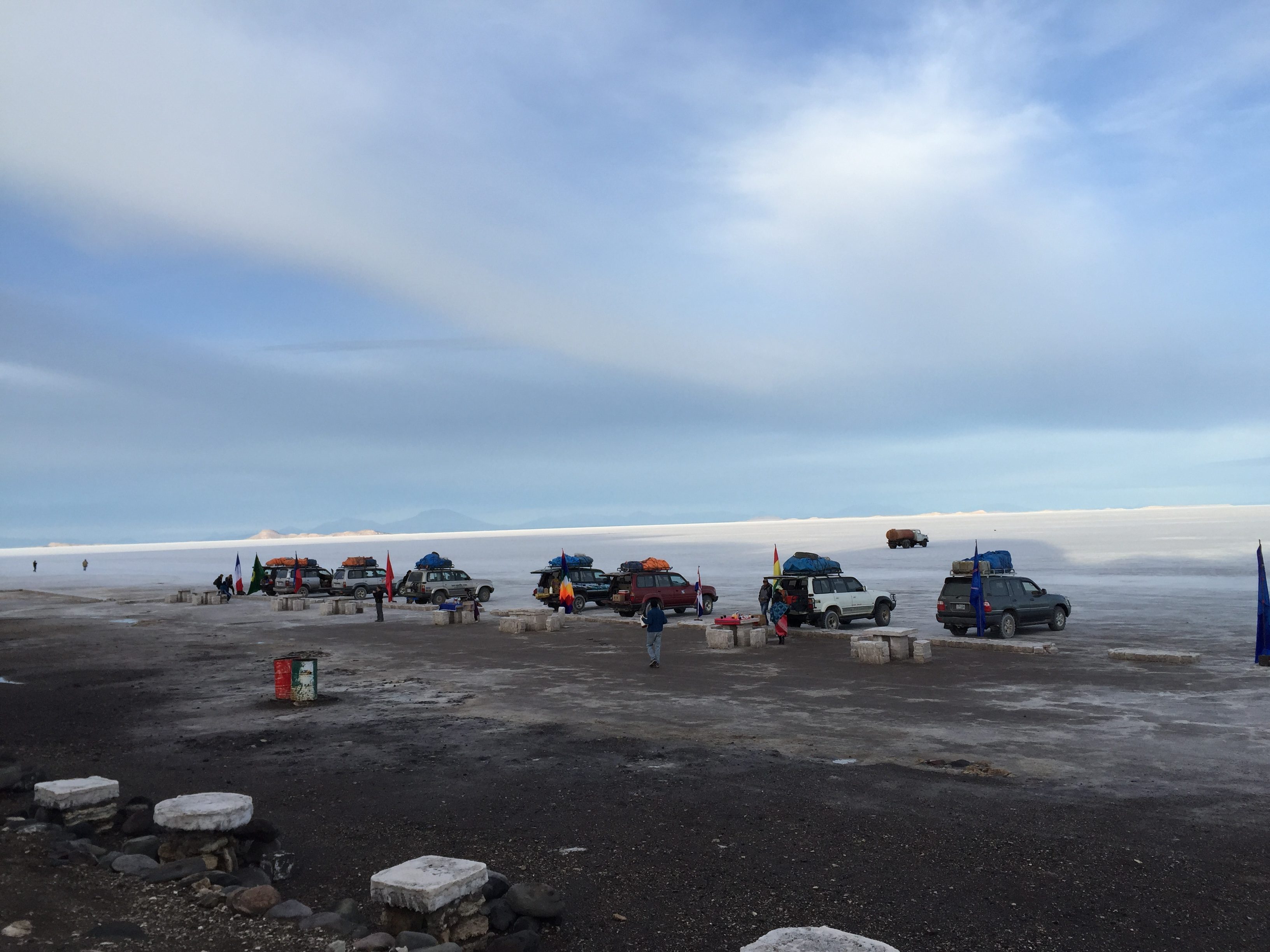
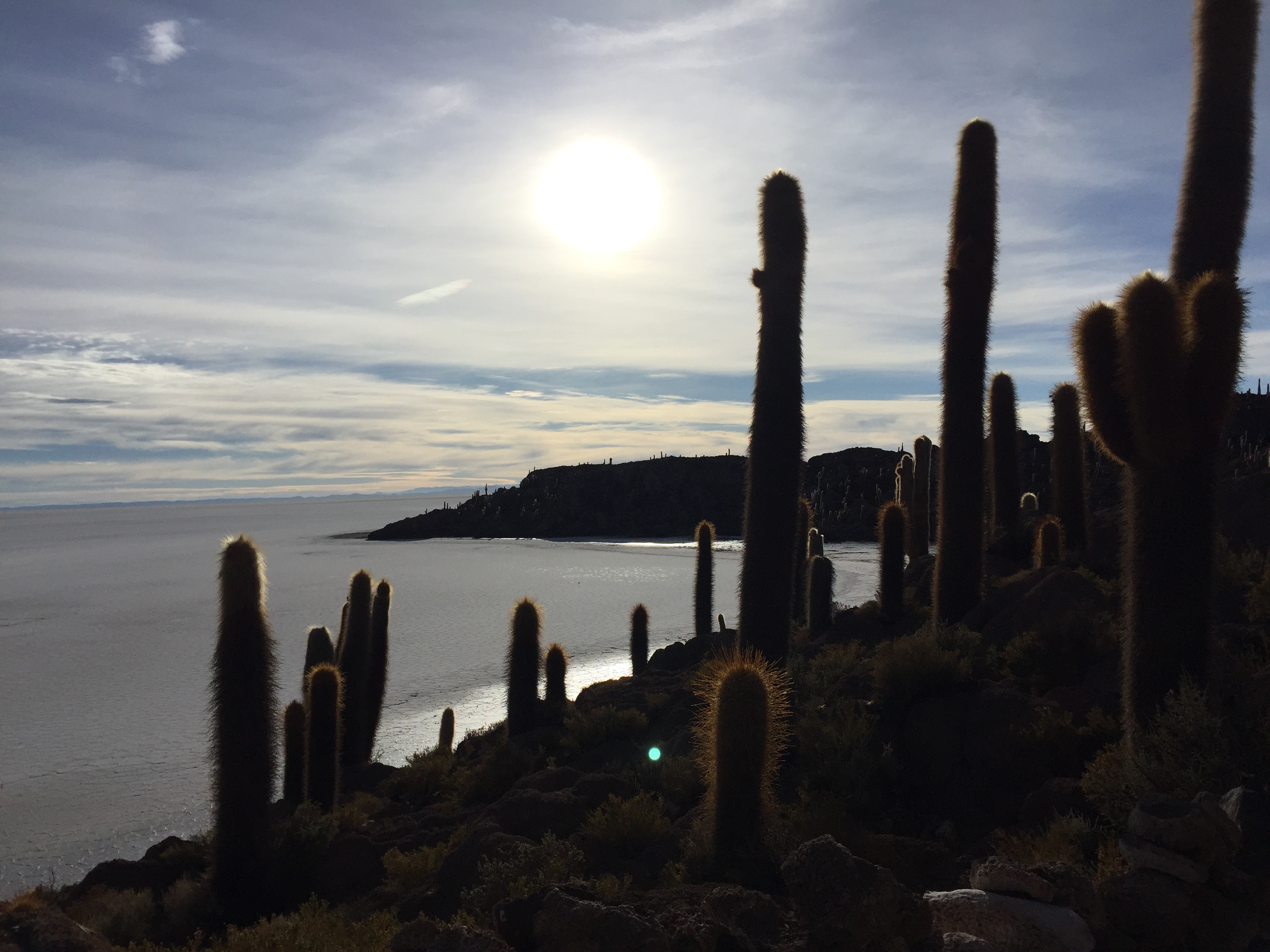
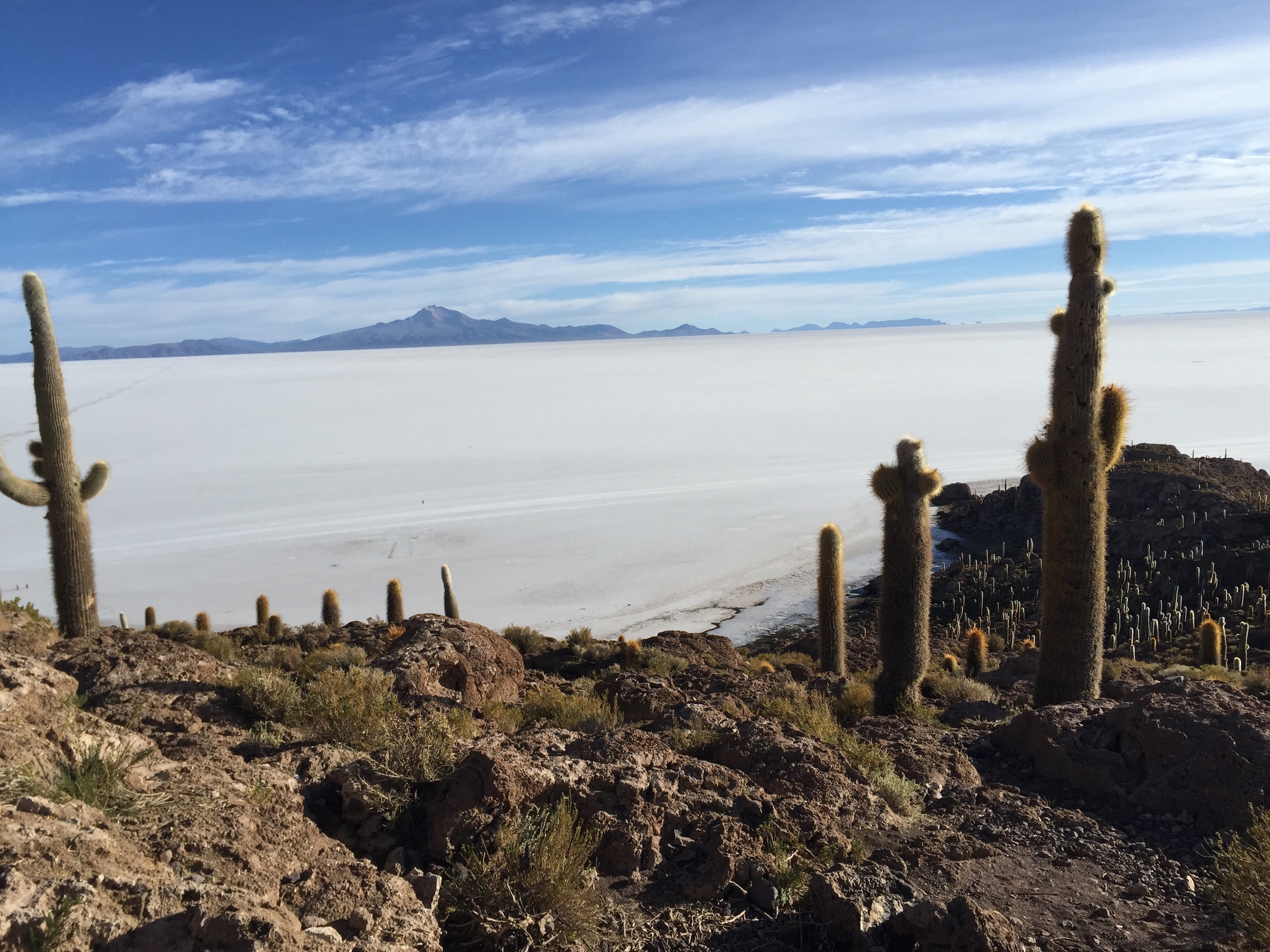

Once we scarfed down our breakfast, we couldn’t contain our excitement. We were heading out to the salt flats for five hours to take the iconic pictures that have made this place so famous. This was the culmination of our entire trip and definitely didn’t disappoint.
Due to the flatness, it creates the illusion of objects being larger or smaller depending on the positioning of the camera. It’s all an optical illusion, but we had such fun creating these pictures! I hope you enjoy them!
After we took hundreds of pictures and thoroughly drained our creative juices coming up with unique poses, we had lunch at an all salt restaurant and then made our final tour stop at a Train Graveyard where Butch Cassidy and the Sundance Kid had their last “job” robbing the train before they reached their fate.
Museo de Sal y Montones de Sal.


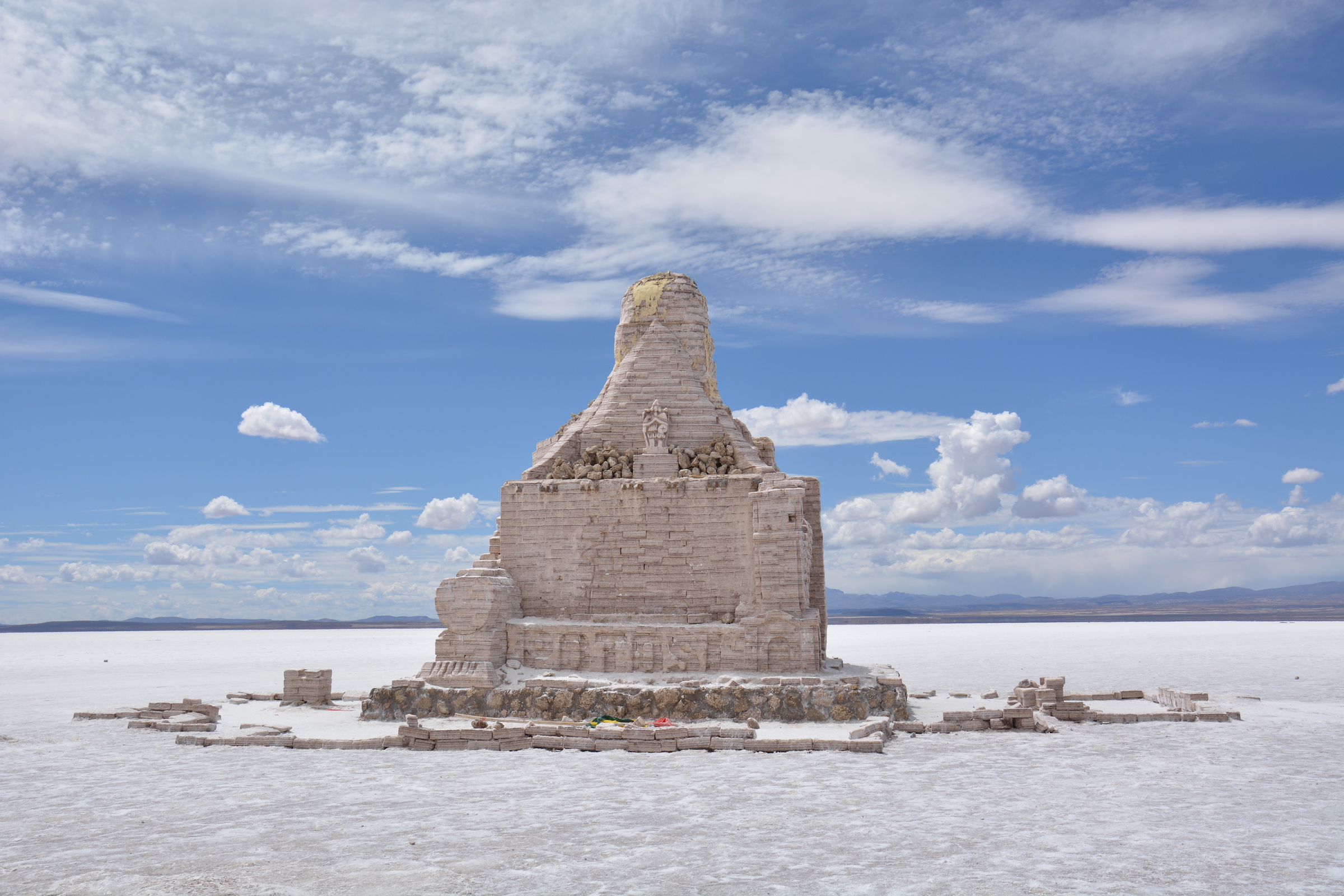
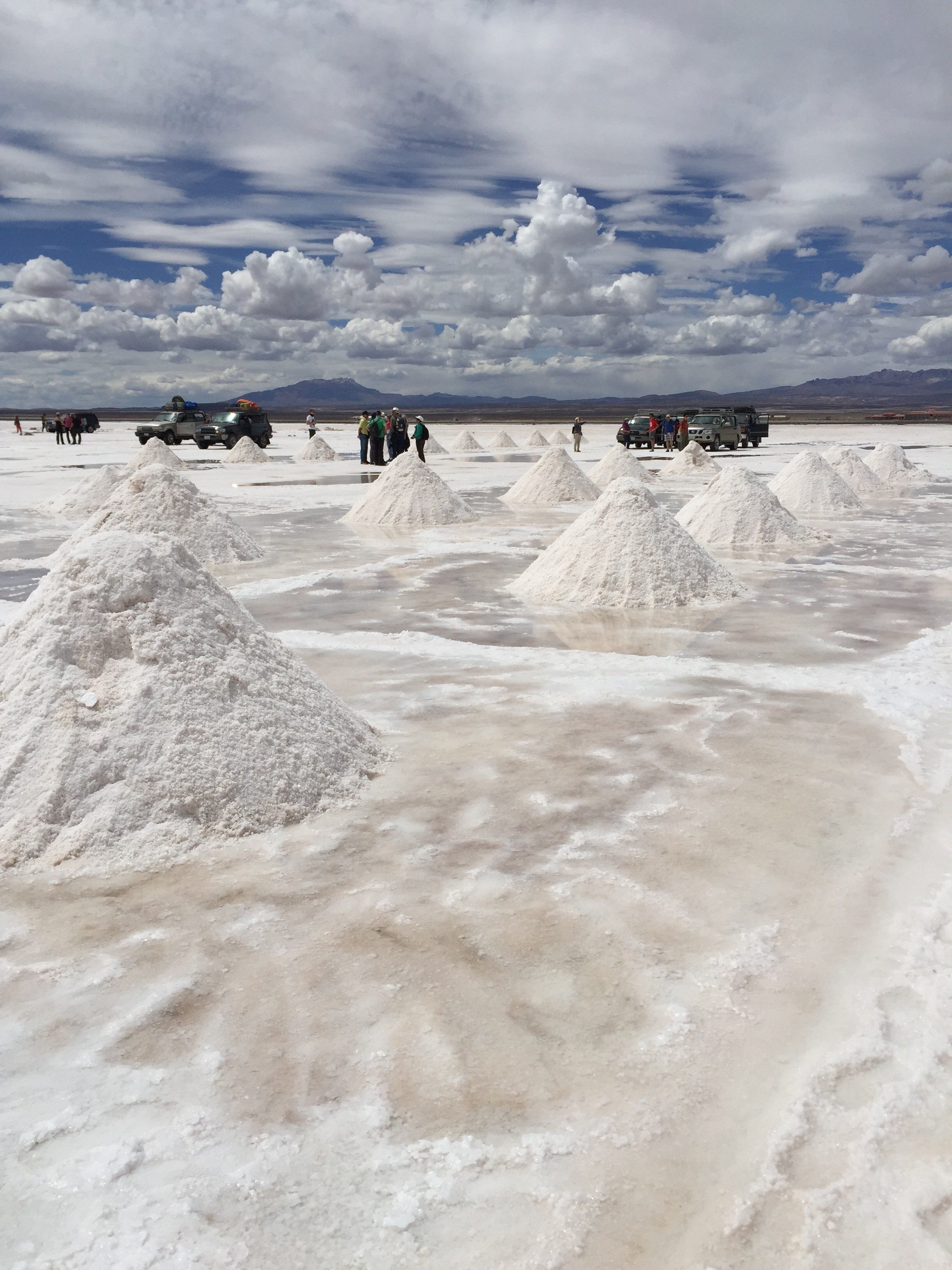
Cementerio de Trenes y Uyuni.
The Salt Flats of Bolivia were by far one of the highlights of our entire trip. A huge Bucket List check point, and I couldn’t recommend this tour more highly!
2015 Bucket List Complete:
- Take a naked picture on the Salt Flats (sorry mom and dad!)
- Hang out with flamingos and llamas
- Lick a salt wall for a tequila shot
- Take a picture in the middle of nowhere
Next Time:
- Do it all again!
Pros:
- EVERYTHING!
- White World Travel was the best booking agency – And Samuel was the best driver! Definitely request him for next time.
Cons:
- No toilet paper – Must bring your own
- No showers – Until the salt hotel
- Our tour ended in Uyuni, Bolivia. There is literally nothing to do in Uyuni so we jumped on the first bus out of town to Potosi.
Tips:
- Choose your group before you book. A group will make or break a trip. As will your driver, but that’s out of your control. (Horror stories of drivers being drunk).
- White World Travel organizes buses out of Uyuni – Take advantage of this.
- Nothing to do in Uyuni. Even though you’re exhausted from the tour, leave immediately. It’s a 3.5 hour bus ride to Potosi, but trust me, it’s worth it.
- Take the tour from San Pedro to Uyuni and not the other direction. From San Pedro, each day the views get better with the salt flats as the grand finale. If you start in Uyuni, you see the salt flats first and everything else (I hear), isn’t as amazing.
- This entire tour is above 10,000ft so be prepared to acclimate before and bring altitude sickness medication with you just to be safe.
- Make sure you have crisp american dollars for the Bolivian visa. They won’t accept any slightly torn/worn bills.
Fun Fact:
- Flamingos get their pink color from the plankton and the plankton eat the algae which produces the pretty flamingo color we all know and love. Therefore, the pinker the flamingo, the older they are because they’ve eaten more plankton. Younger flamingos have a white/gray color.
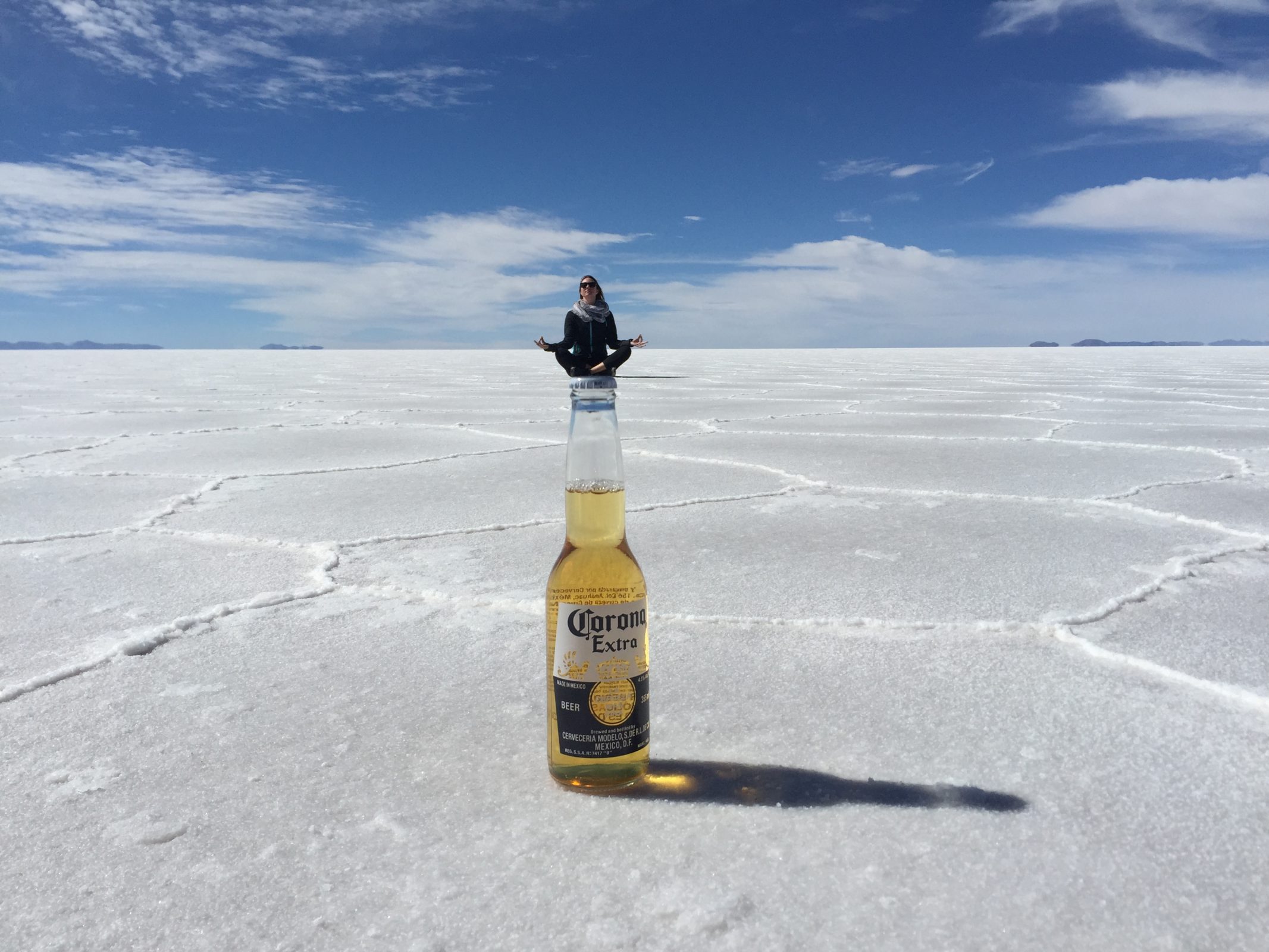


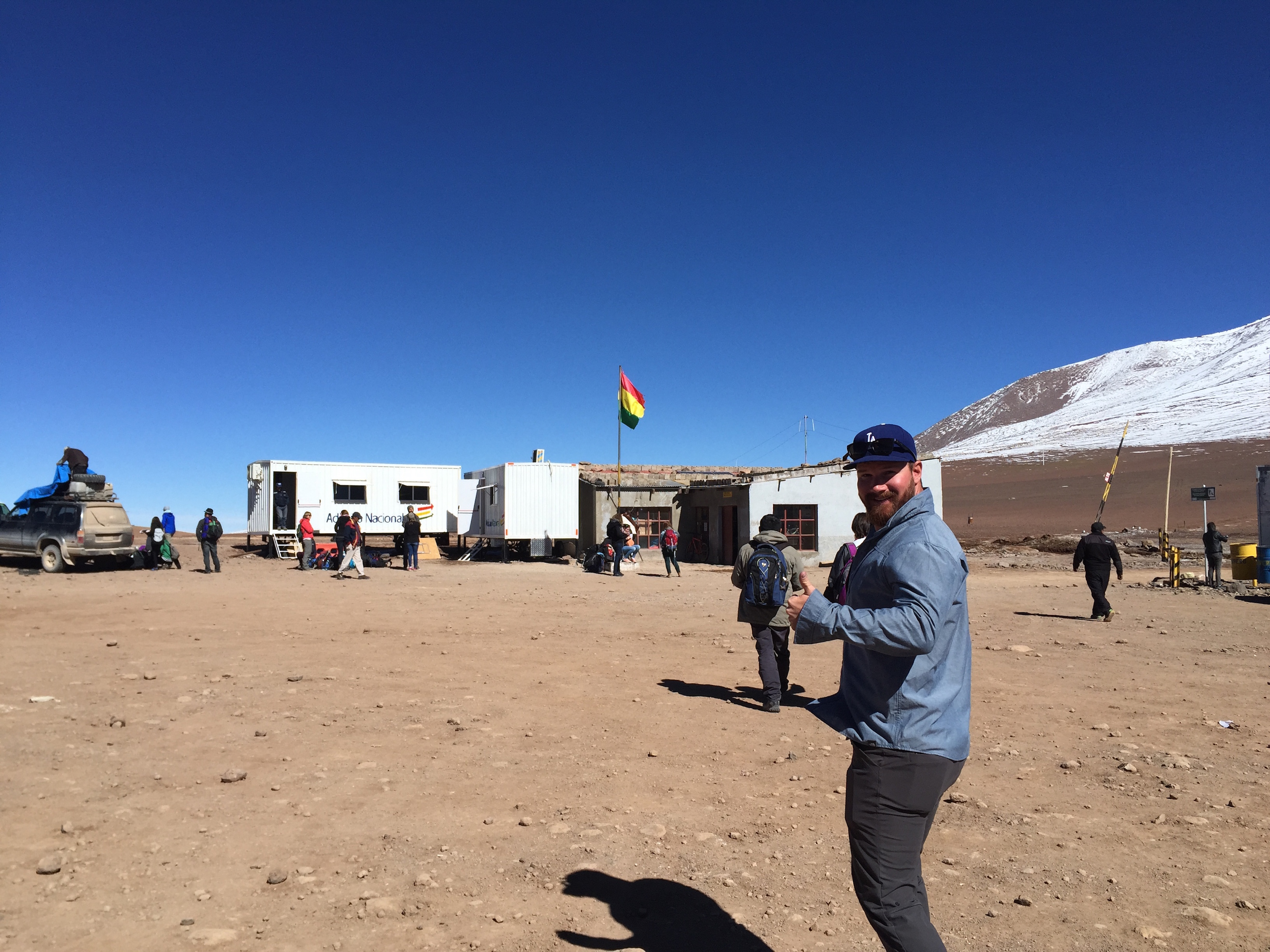


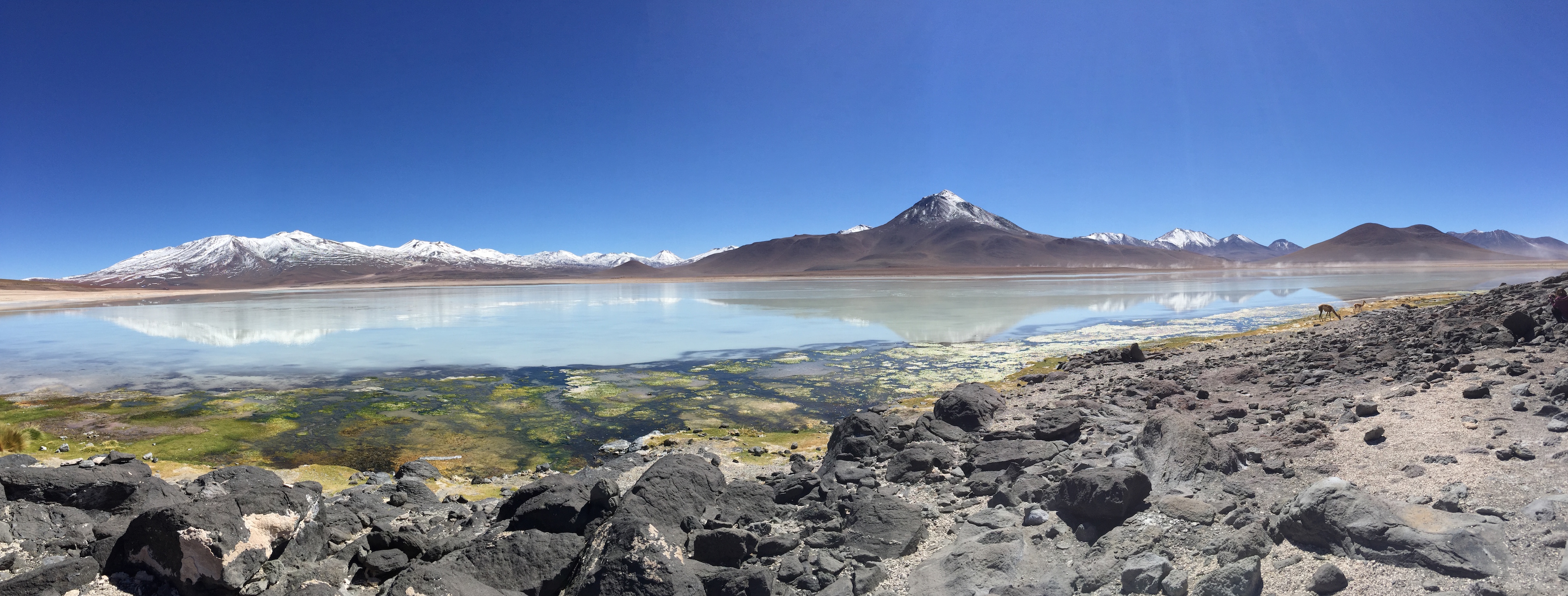
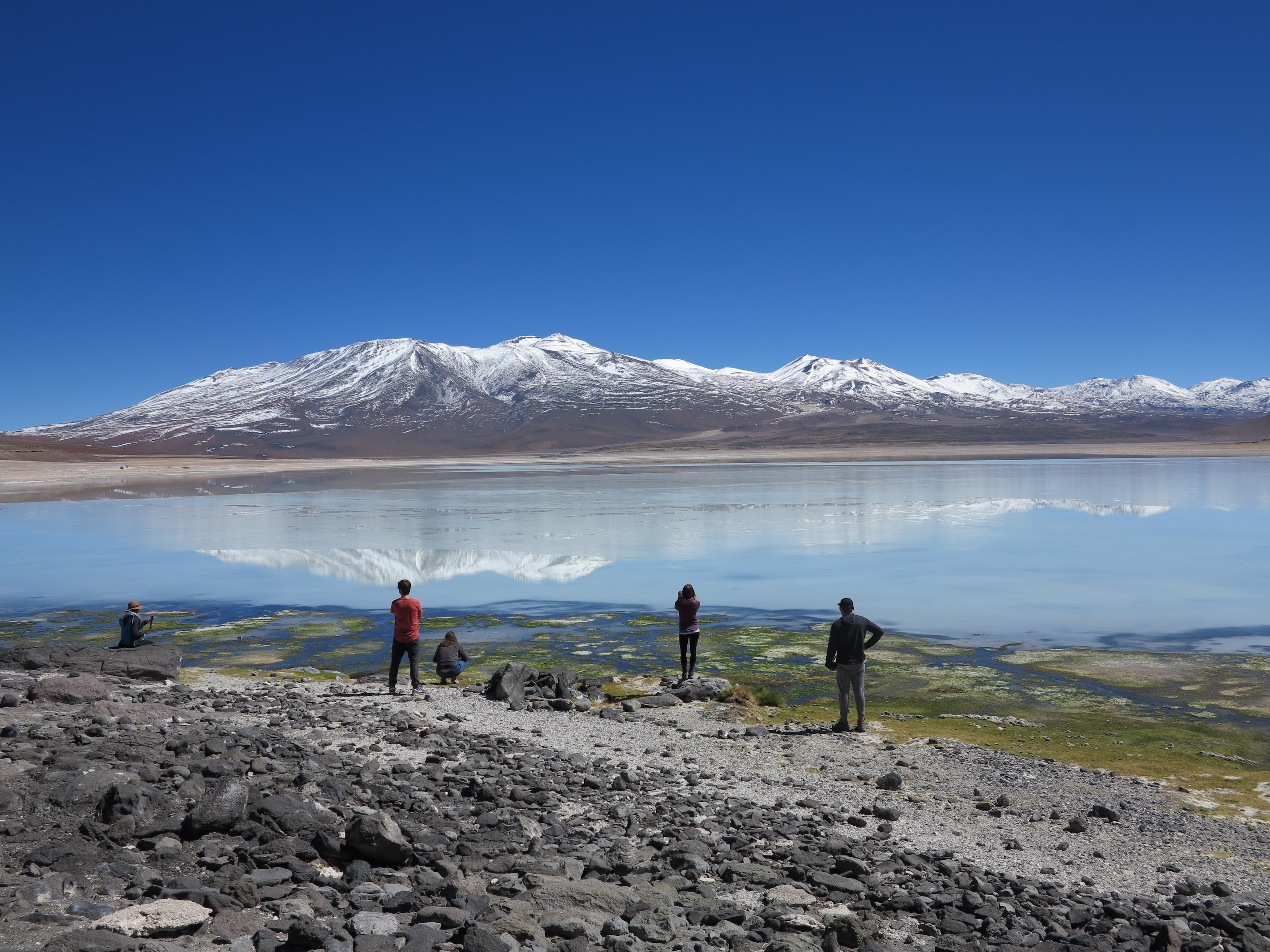


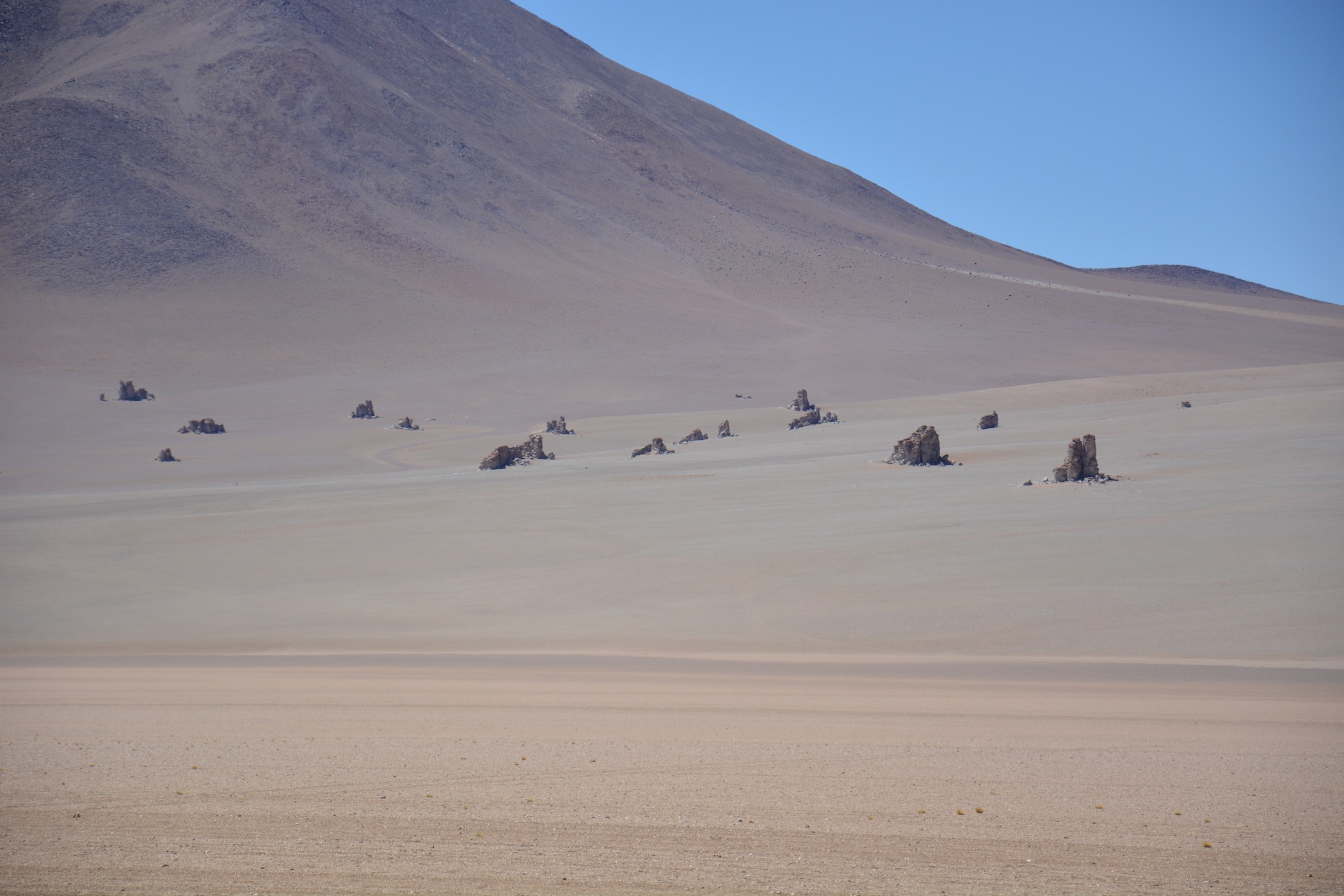
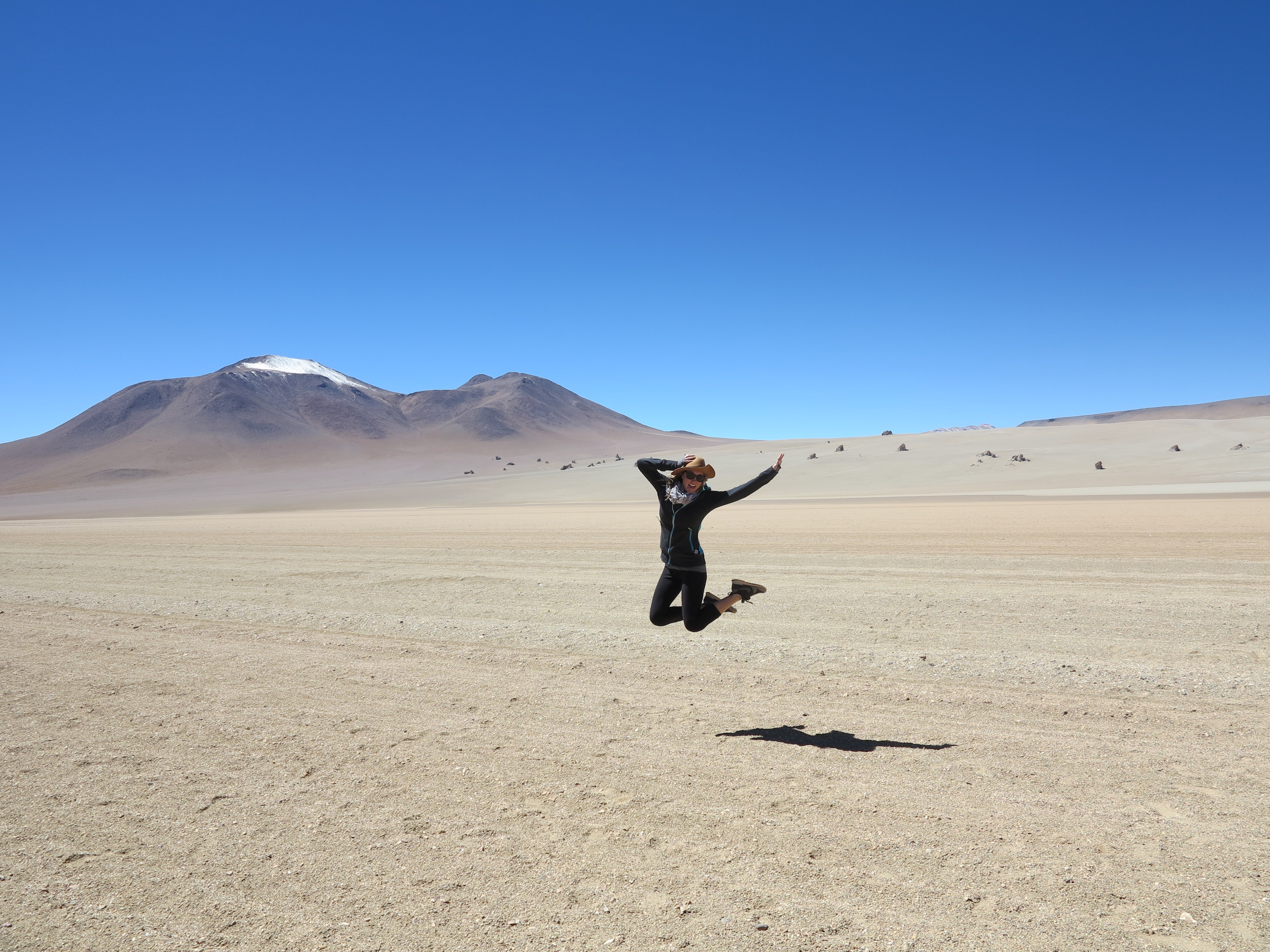

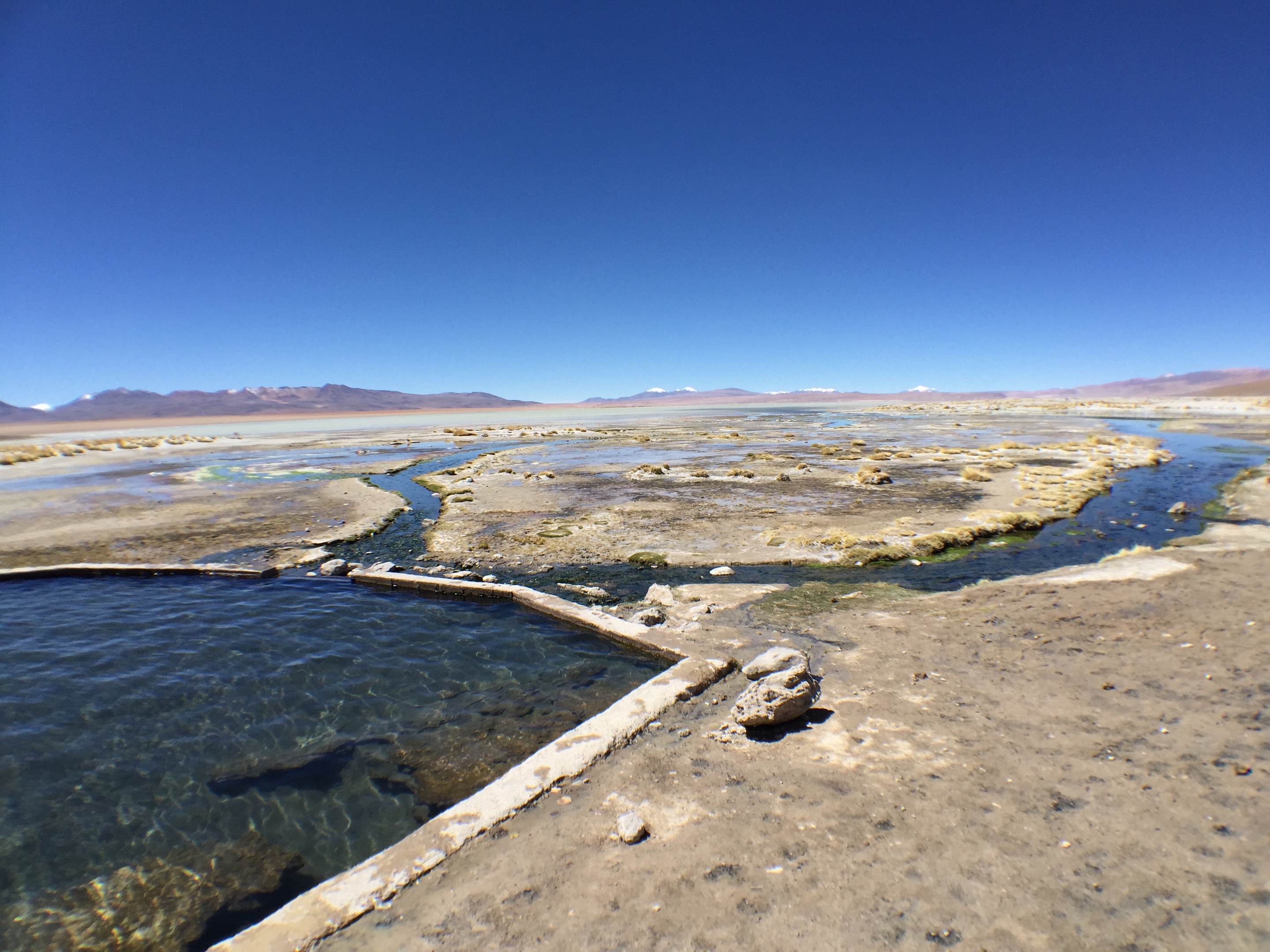
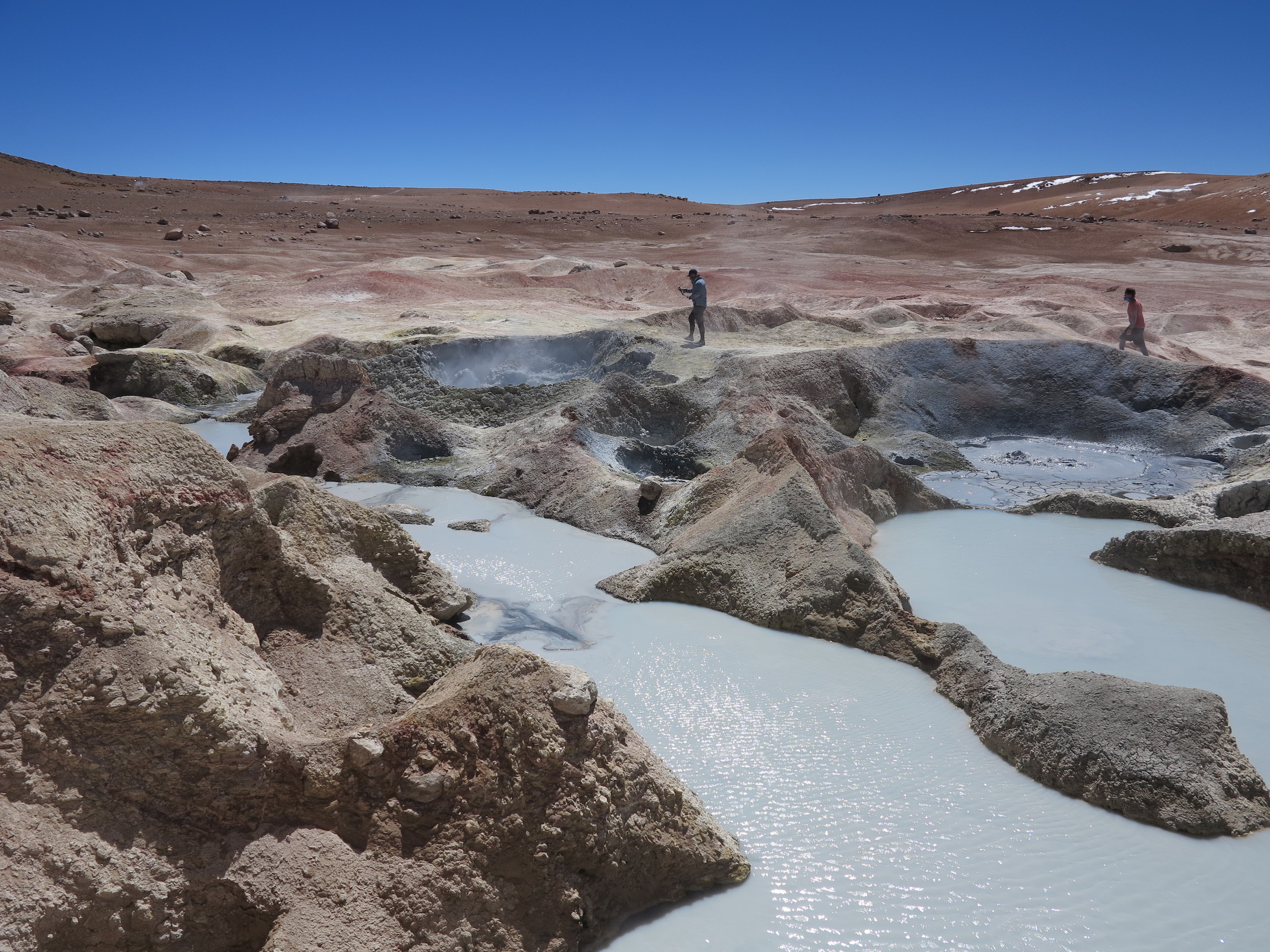
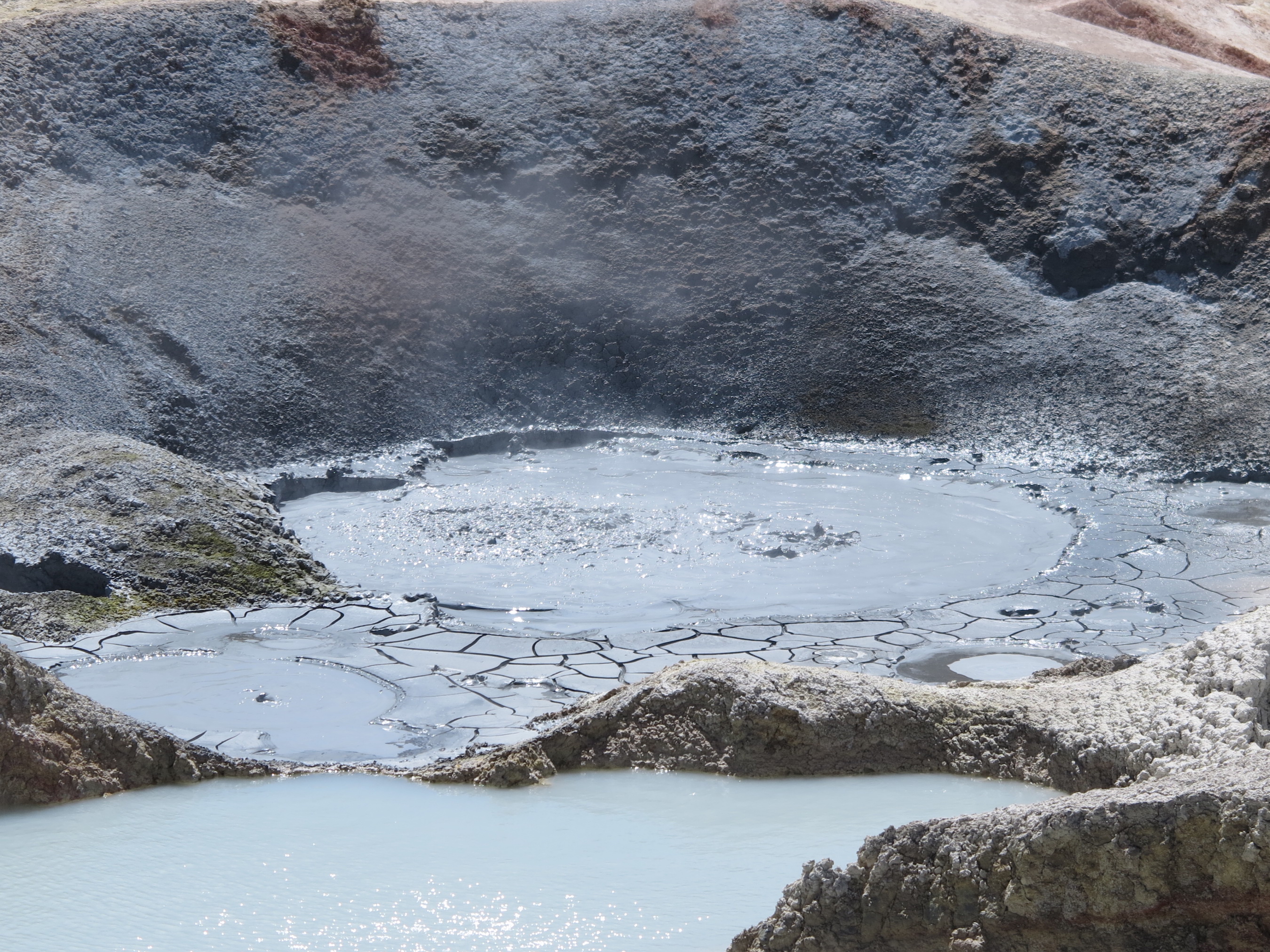




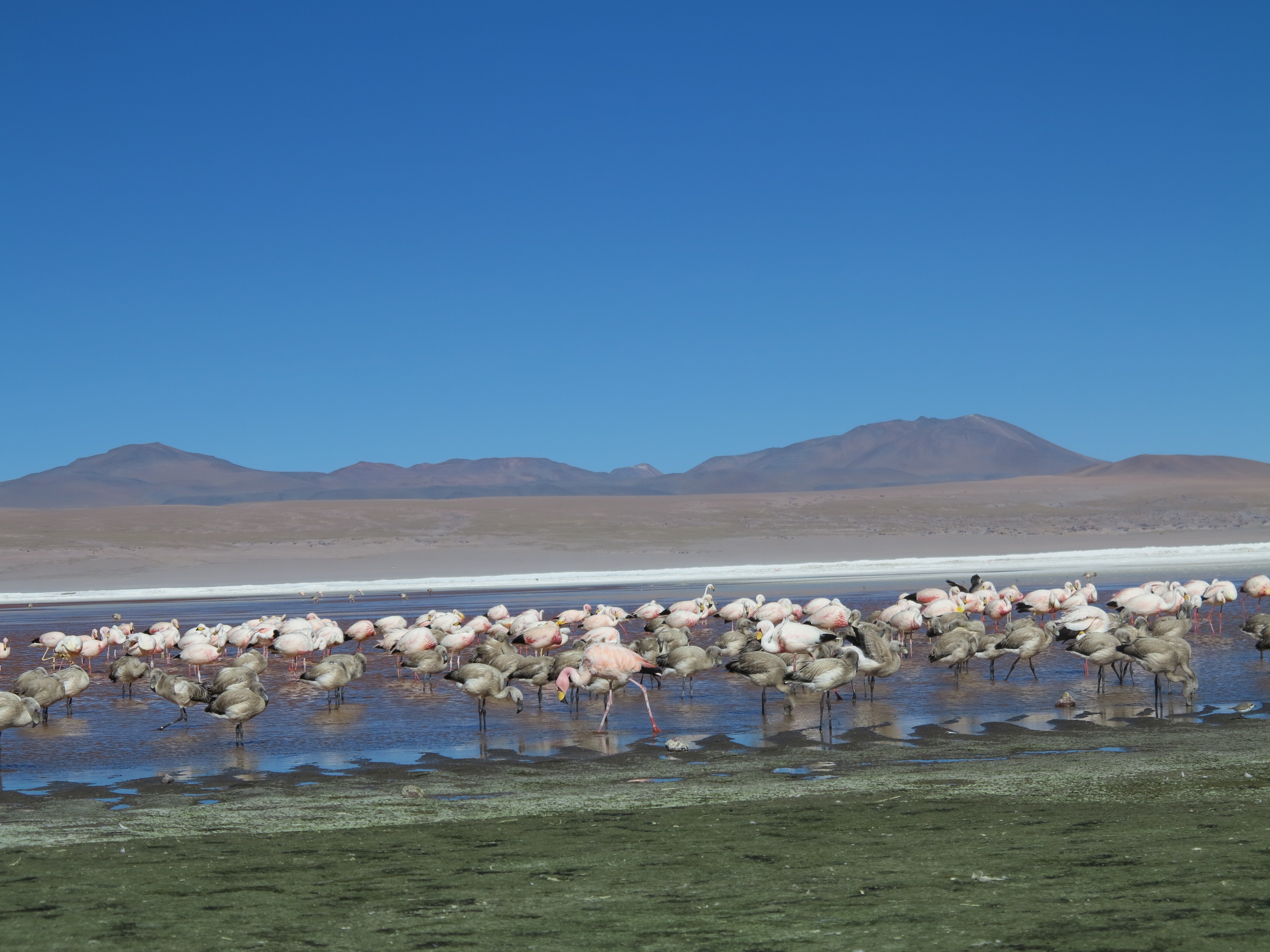


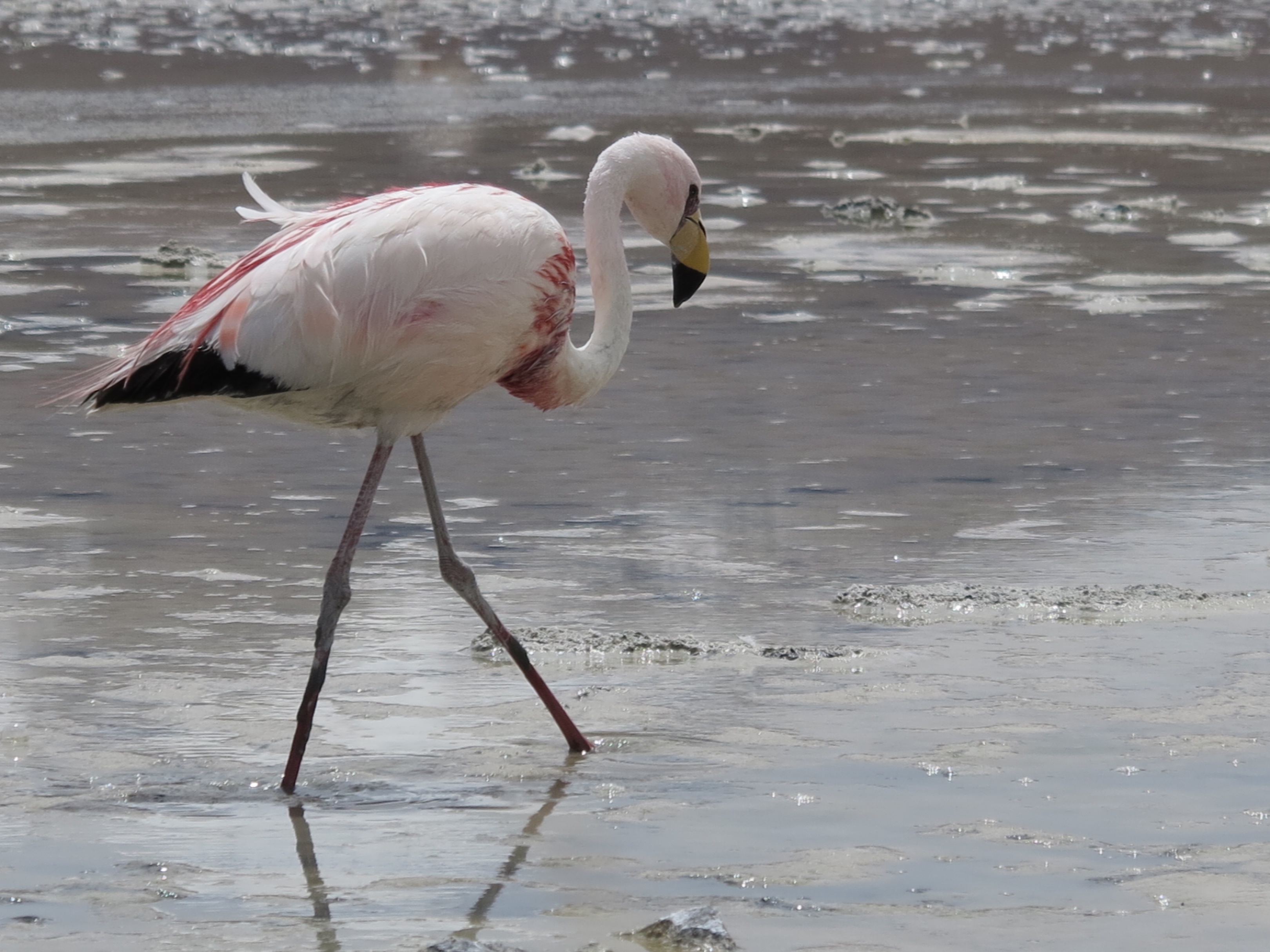

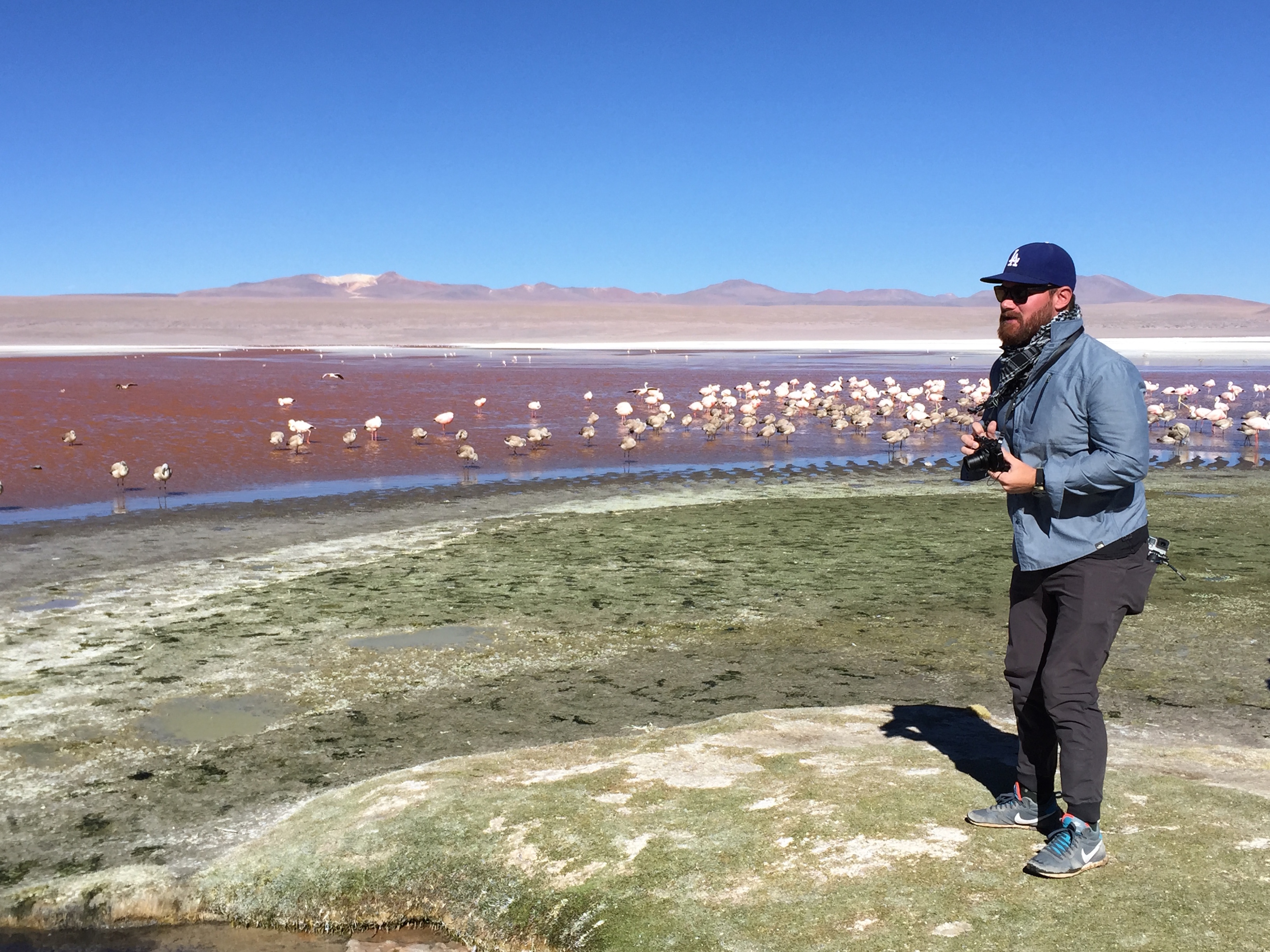
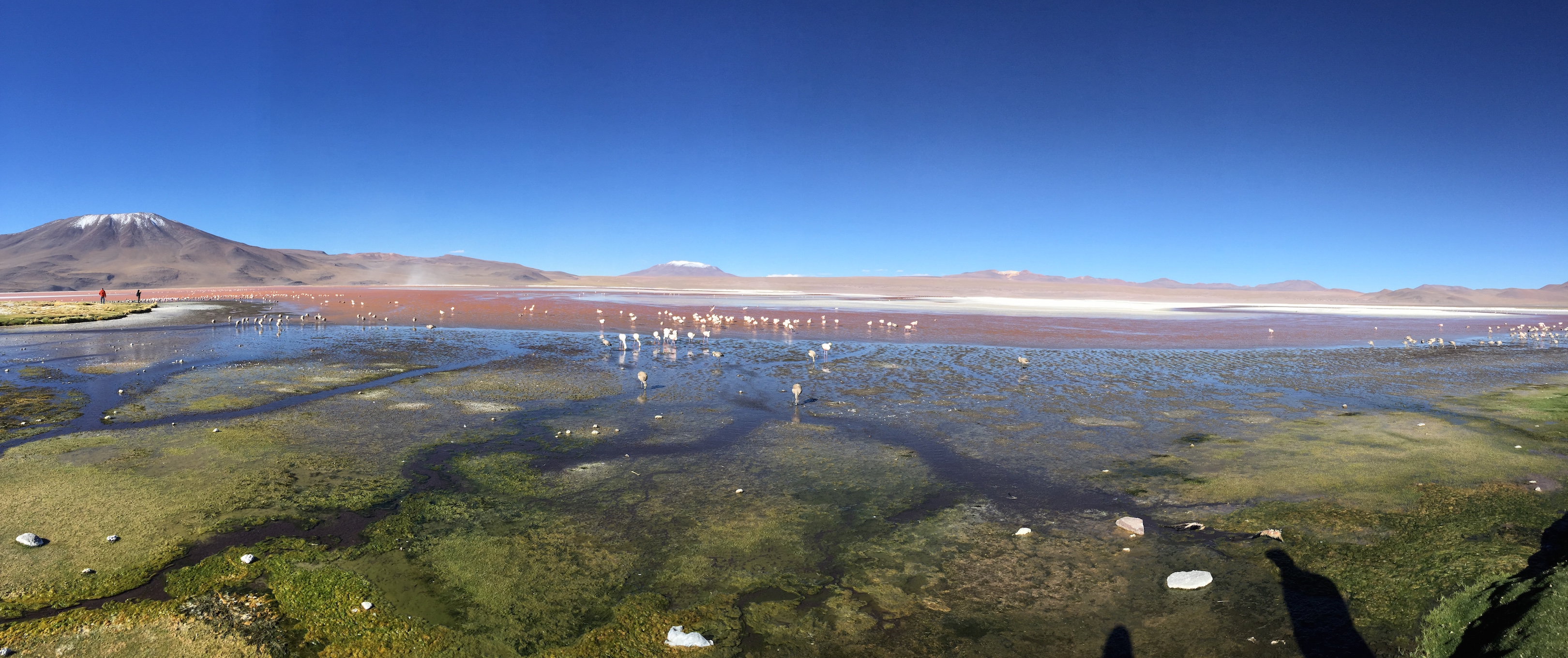

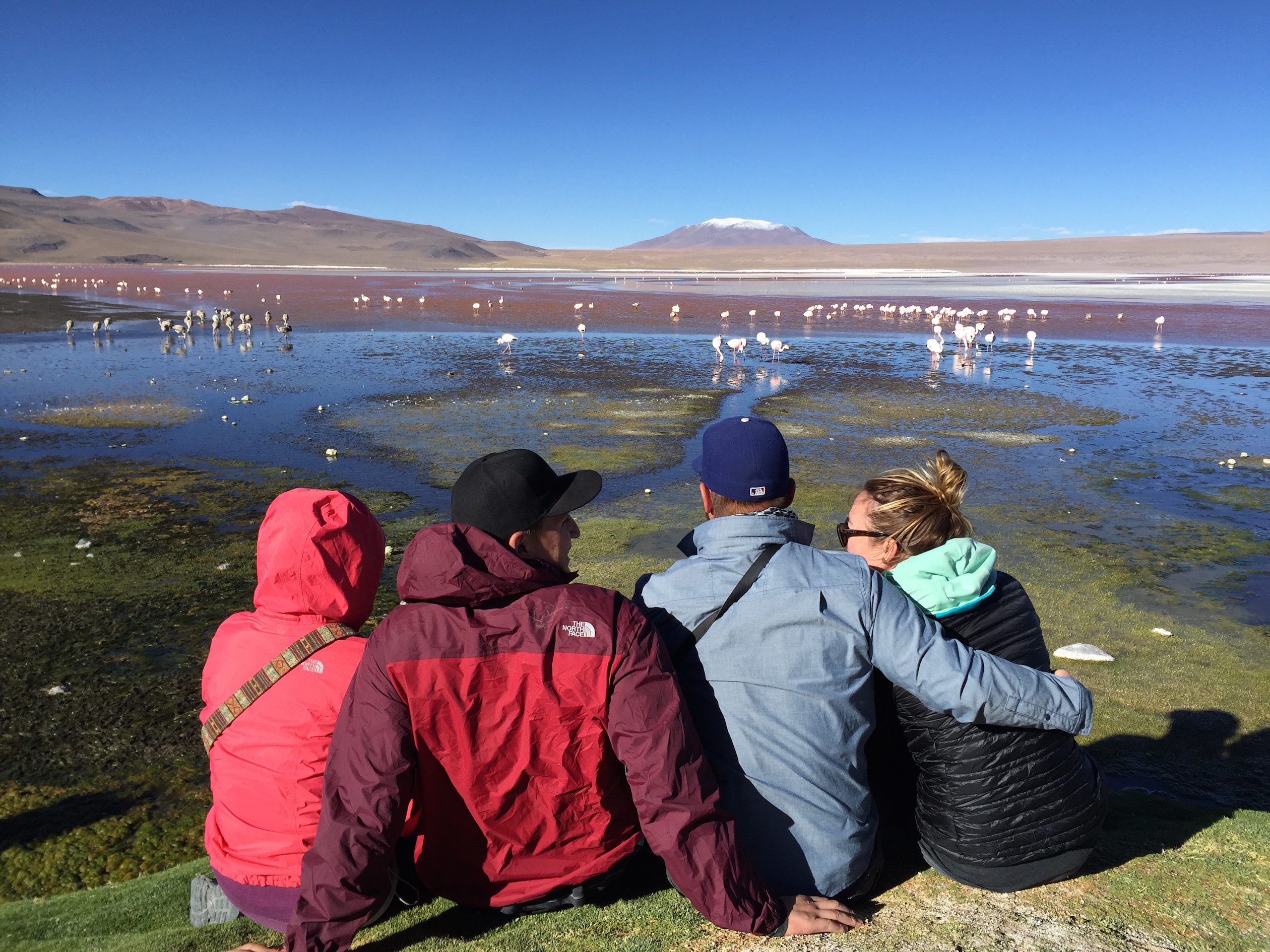
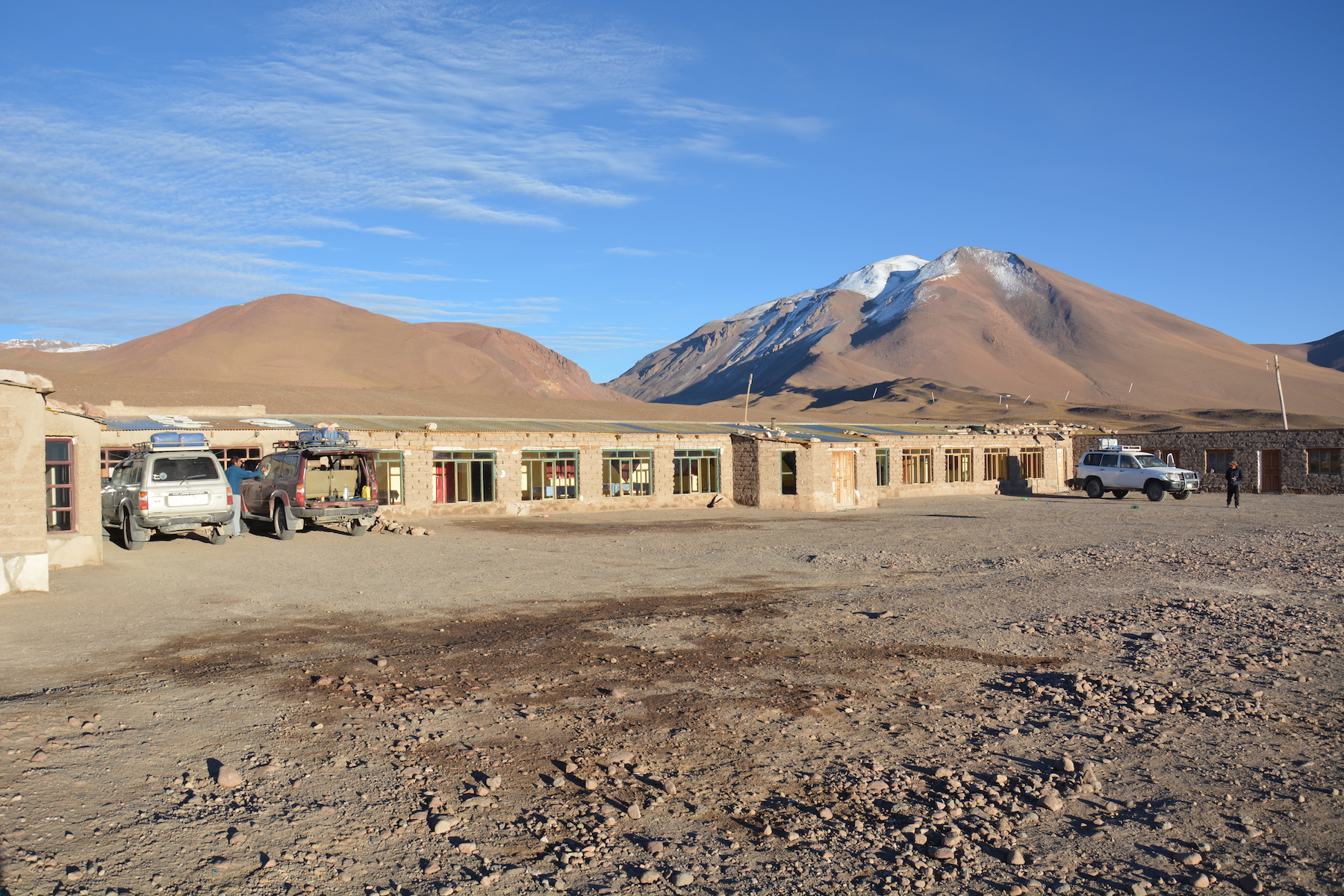
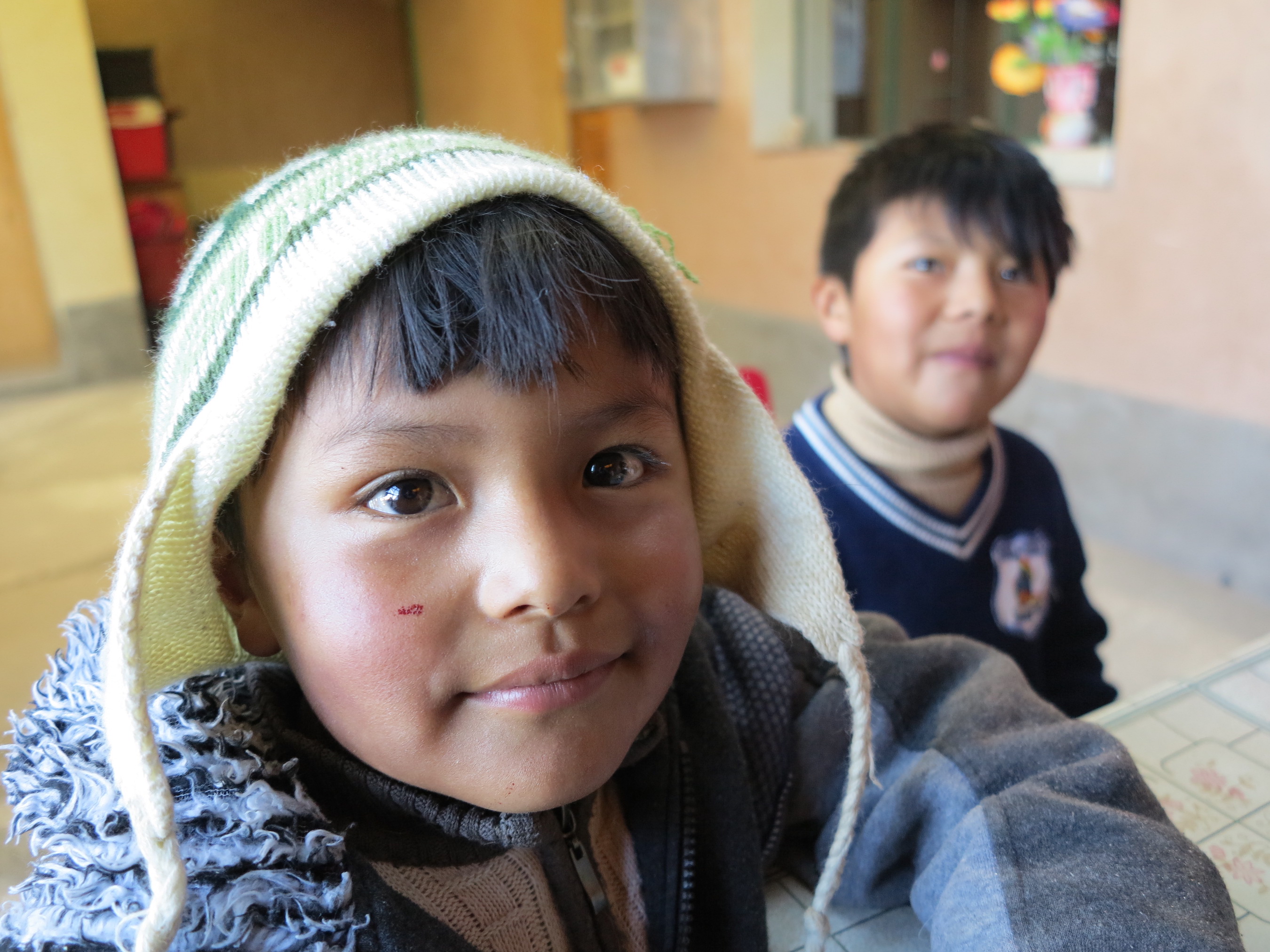
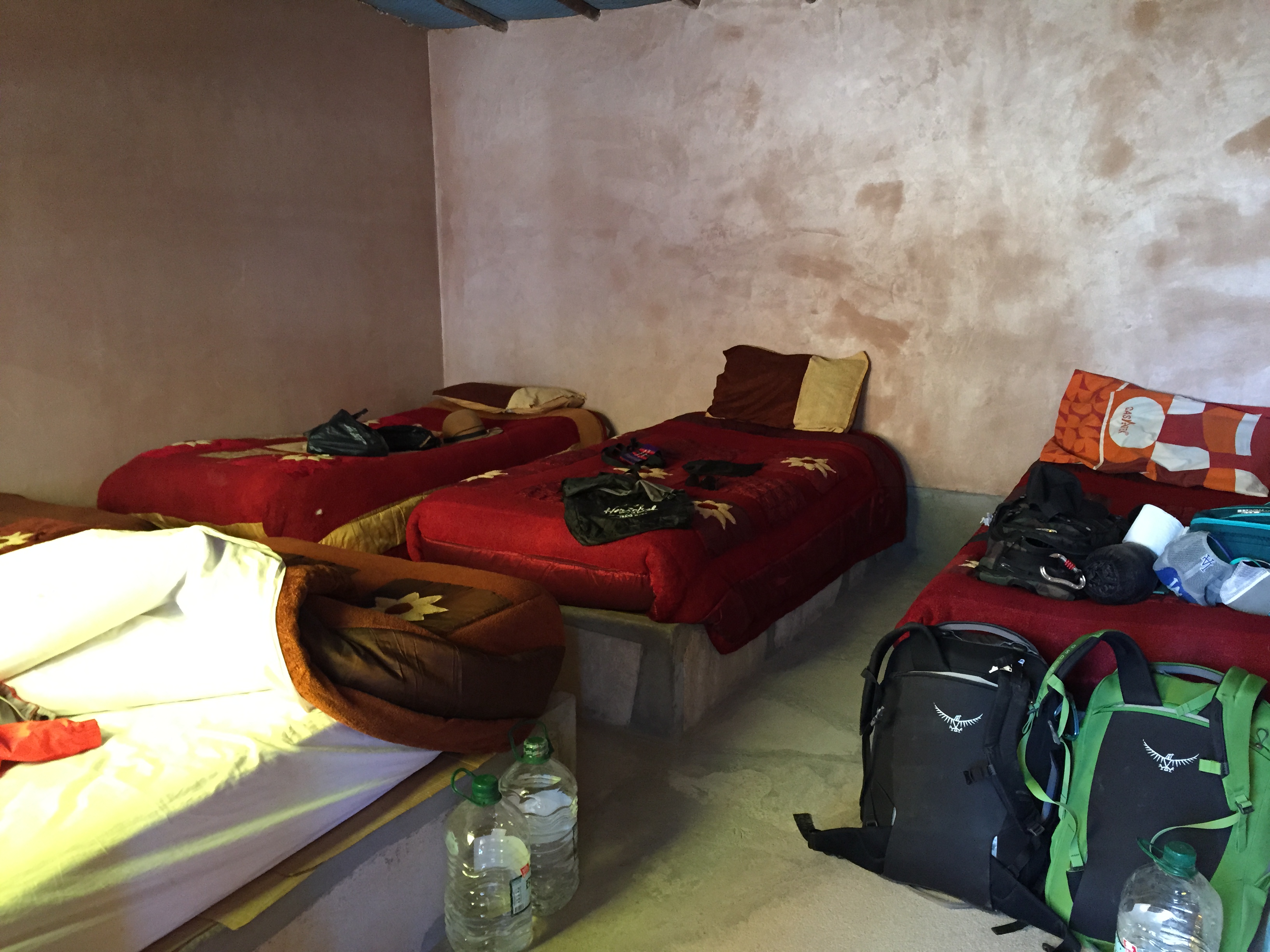

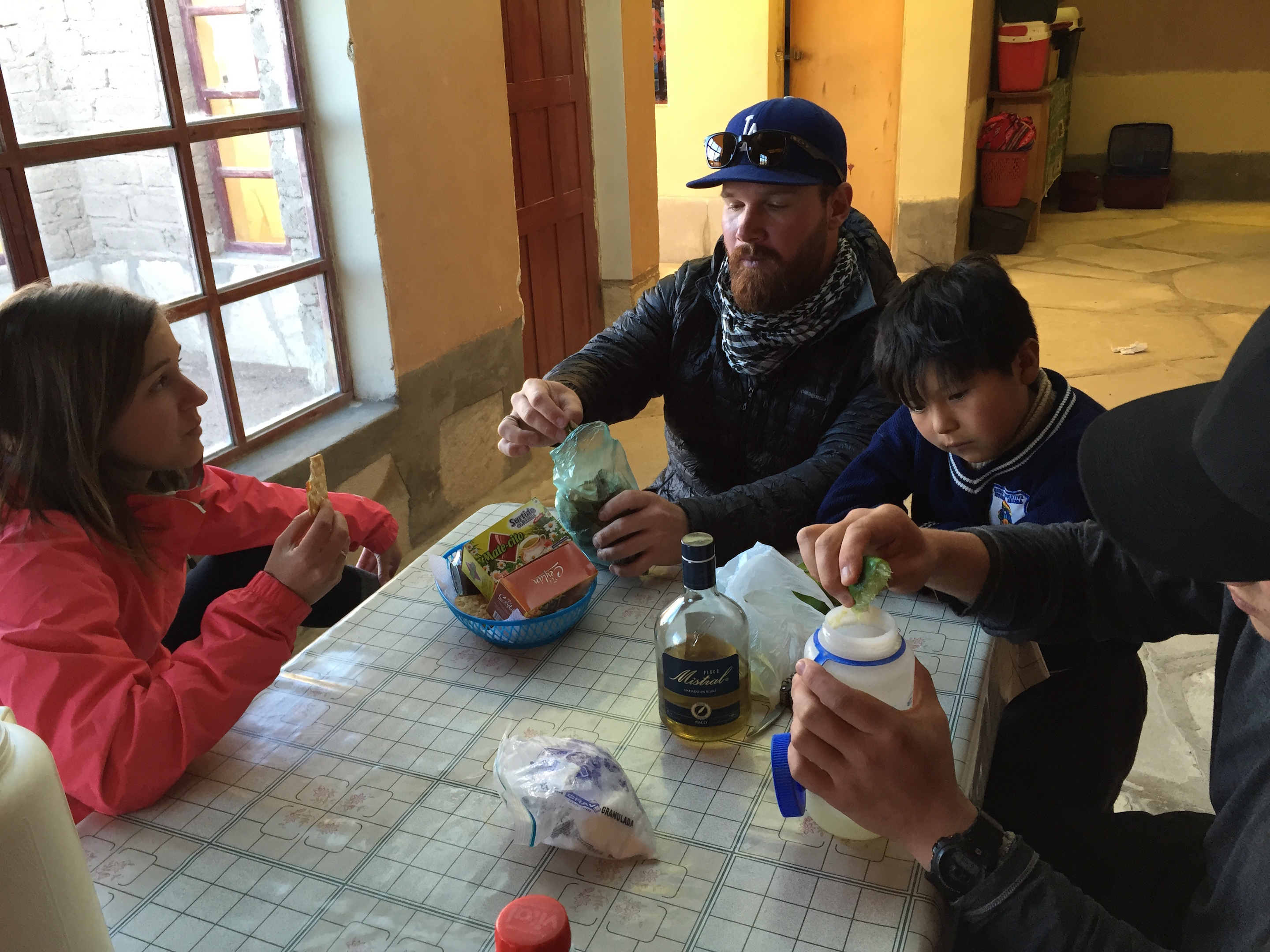




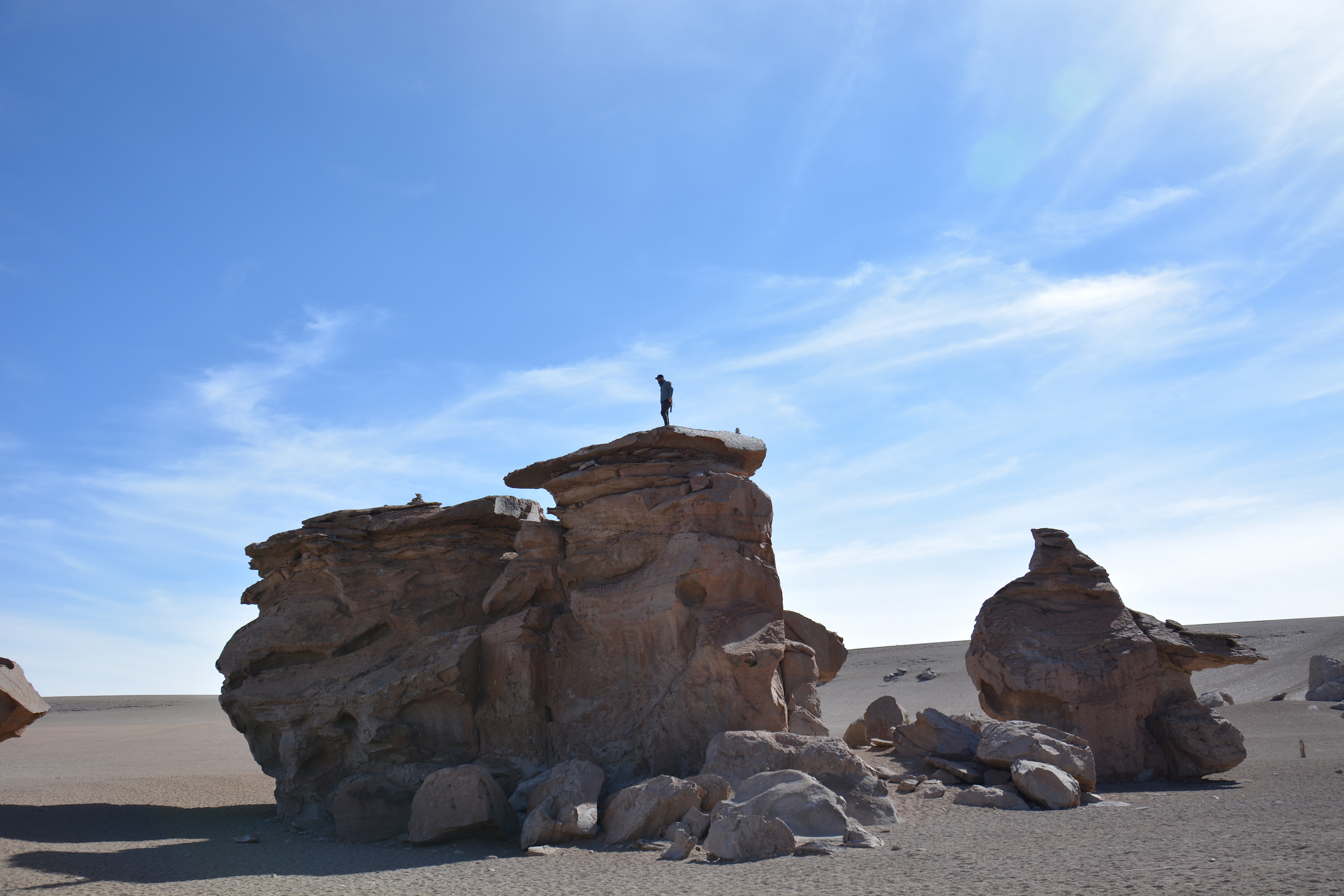
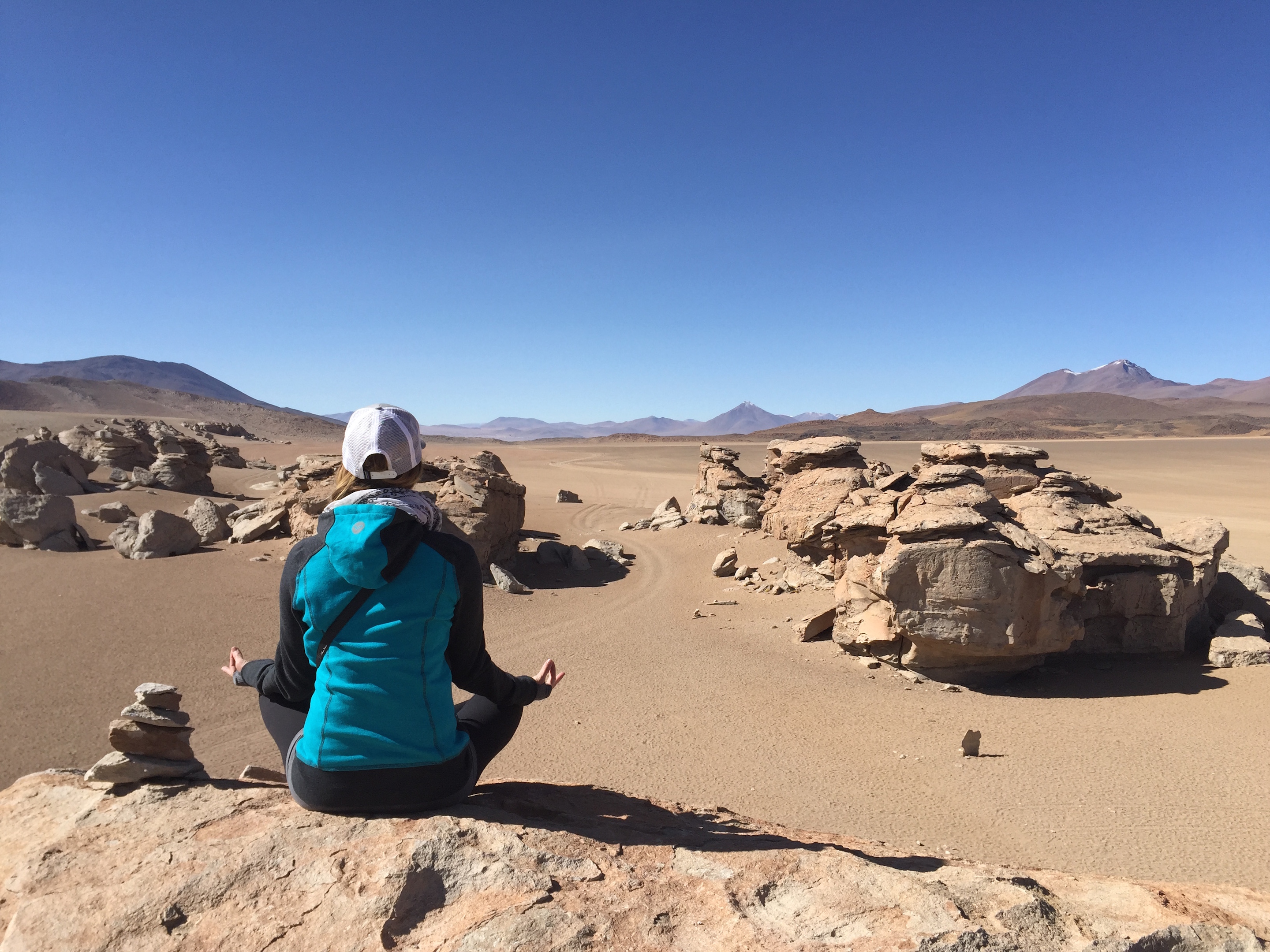
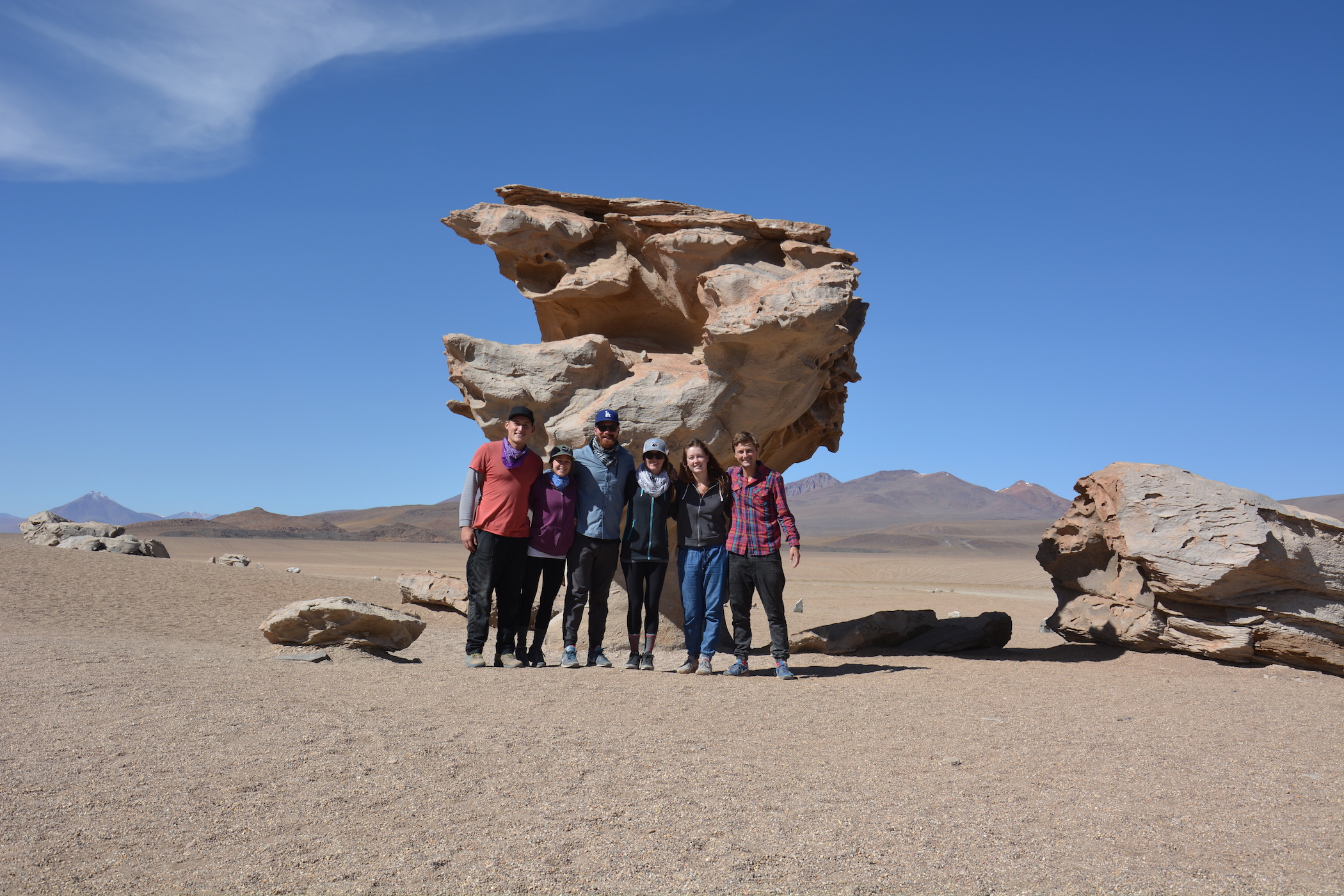
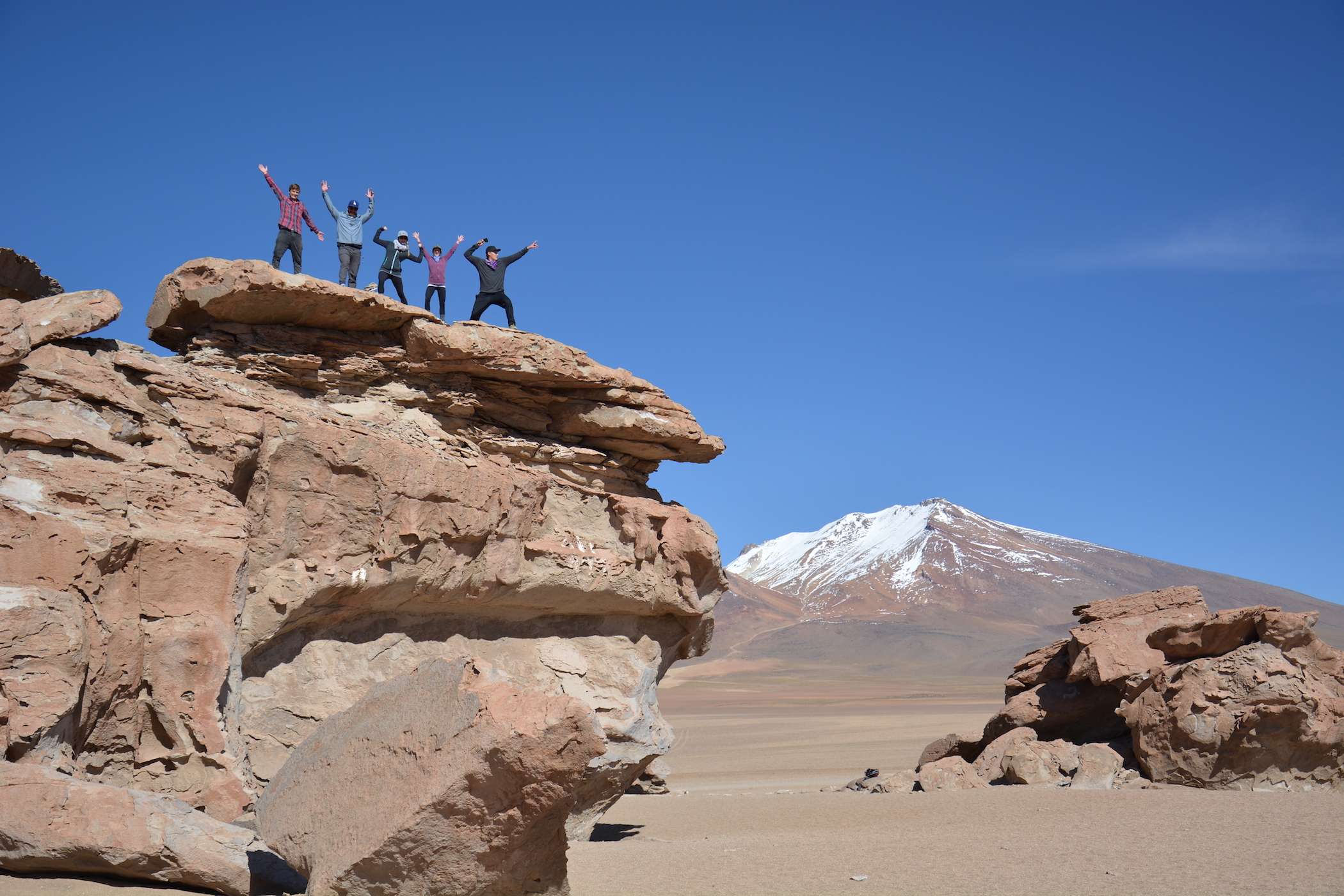
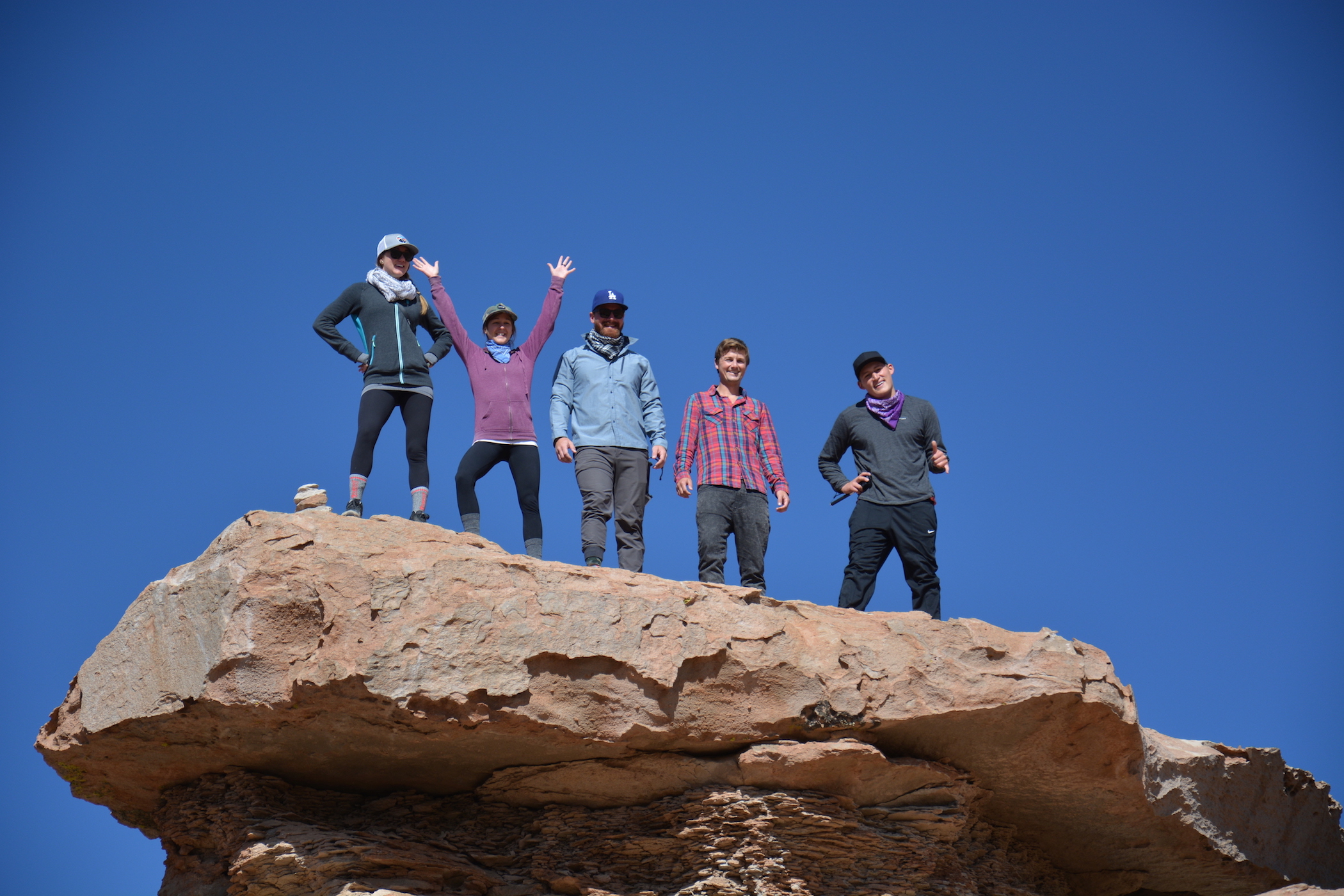


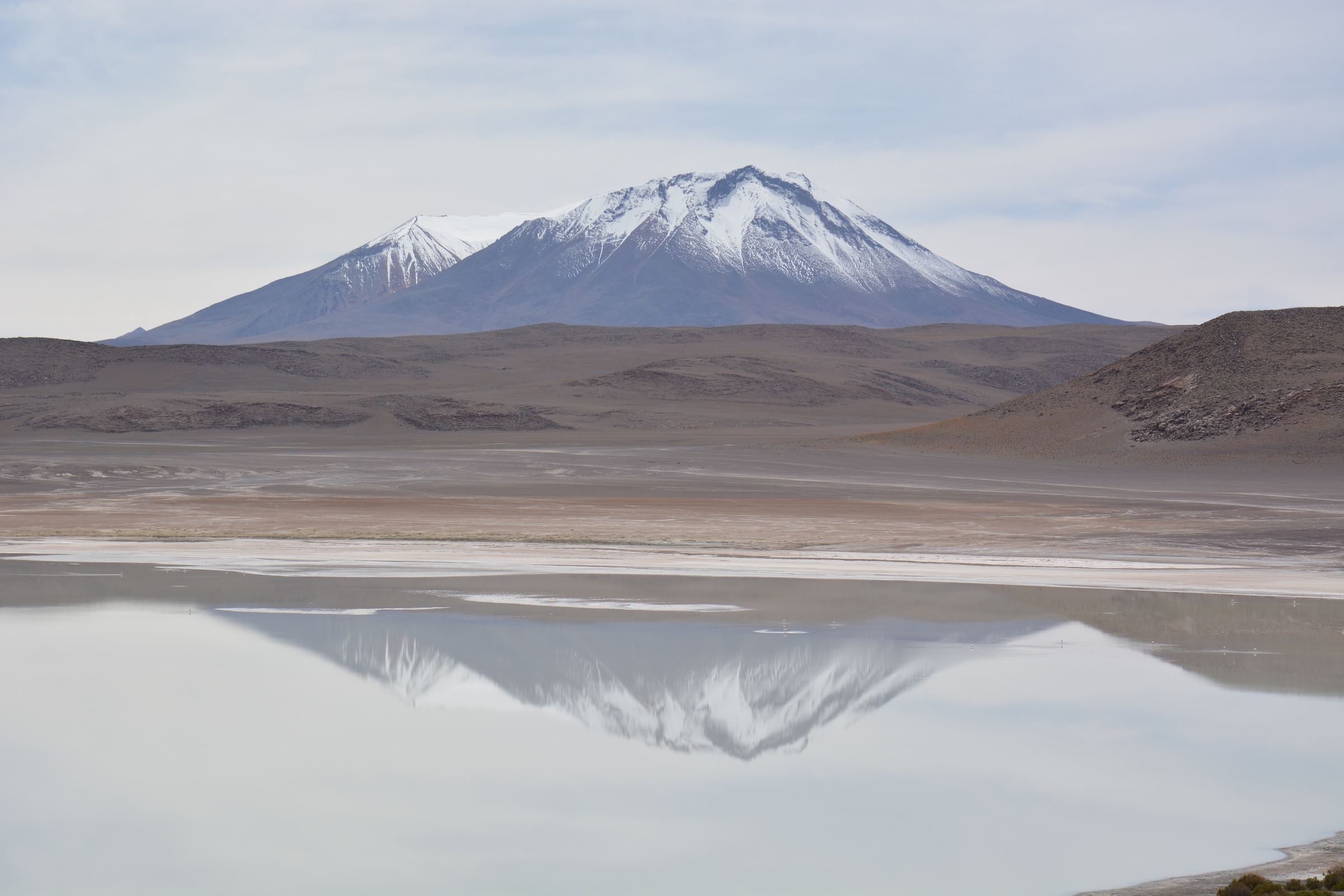
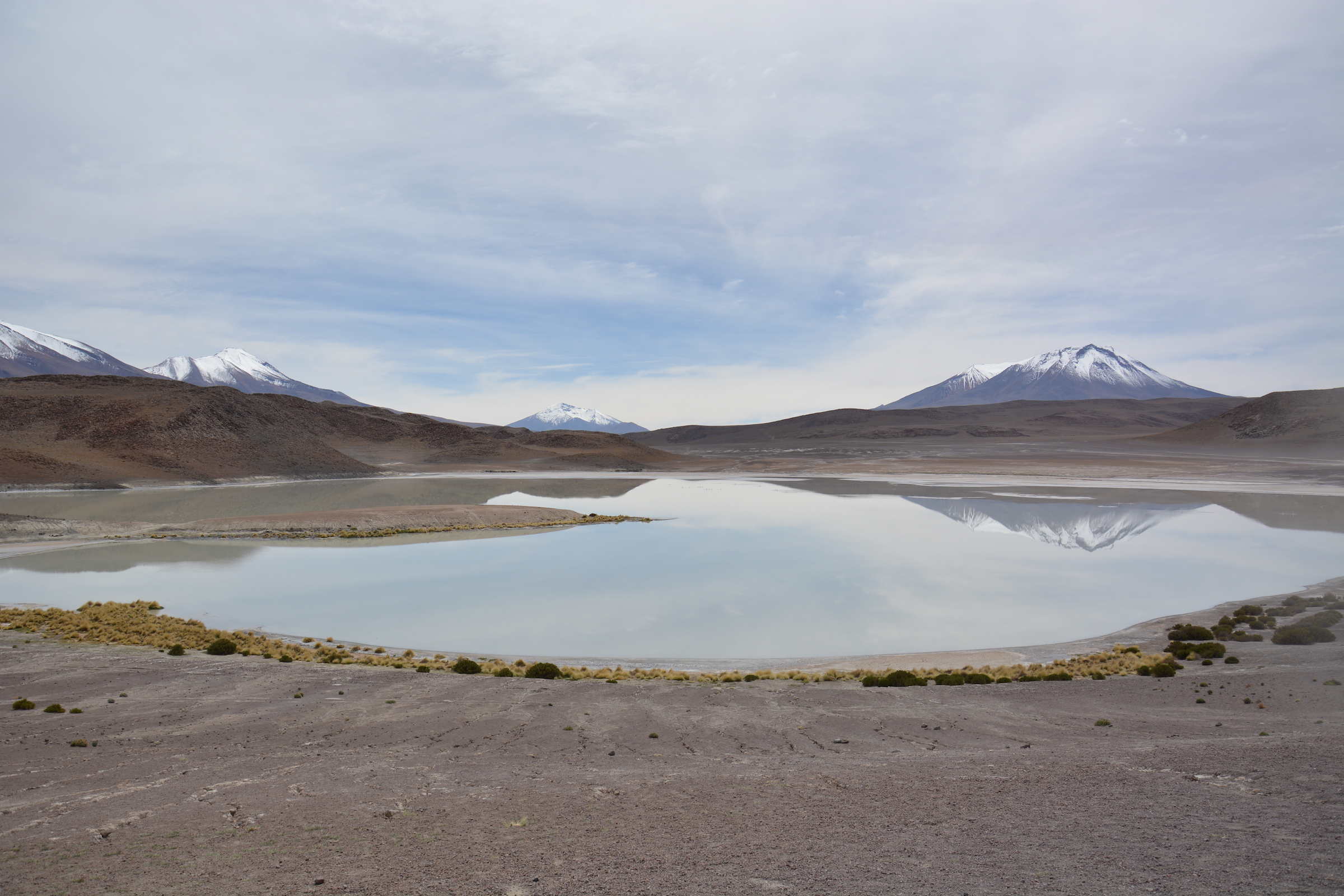

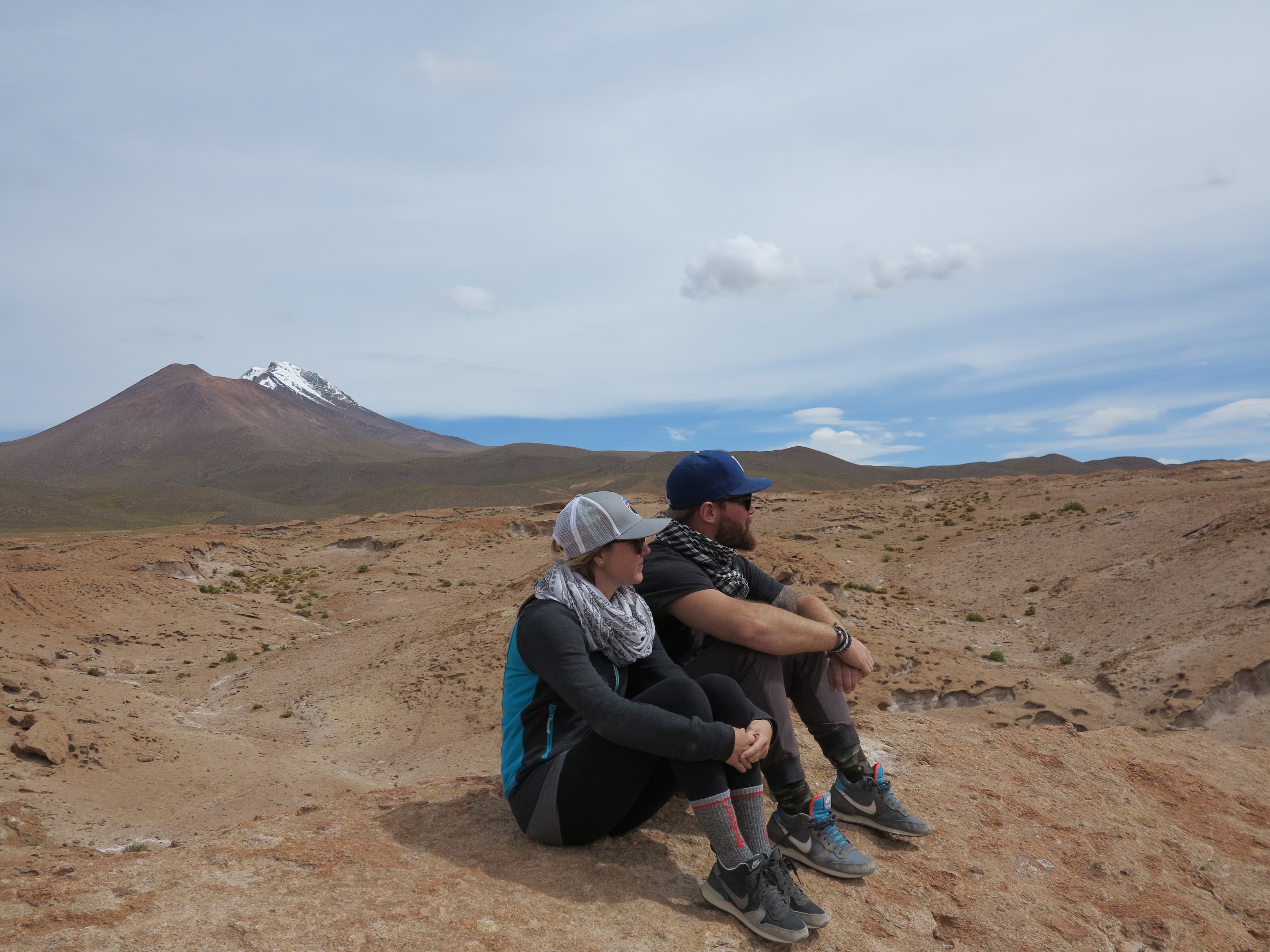





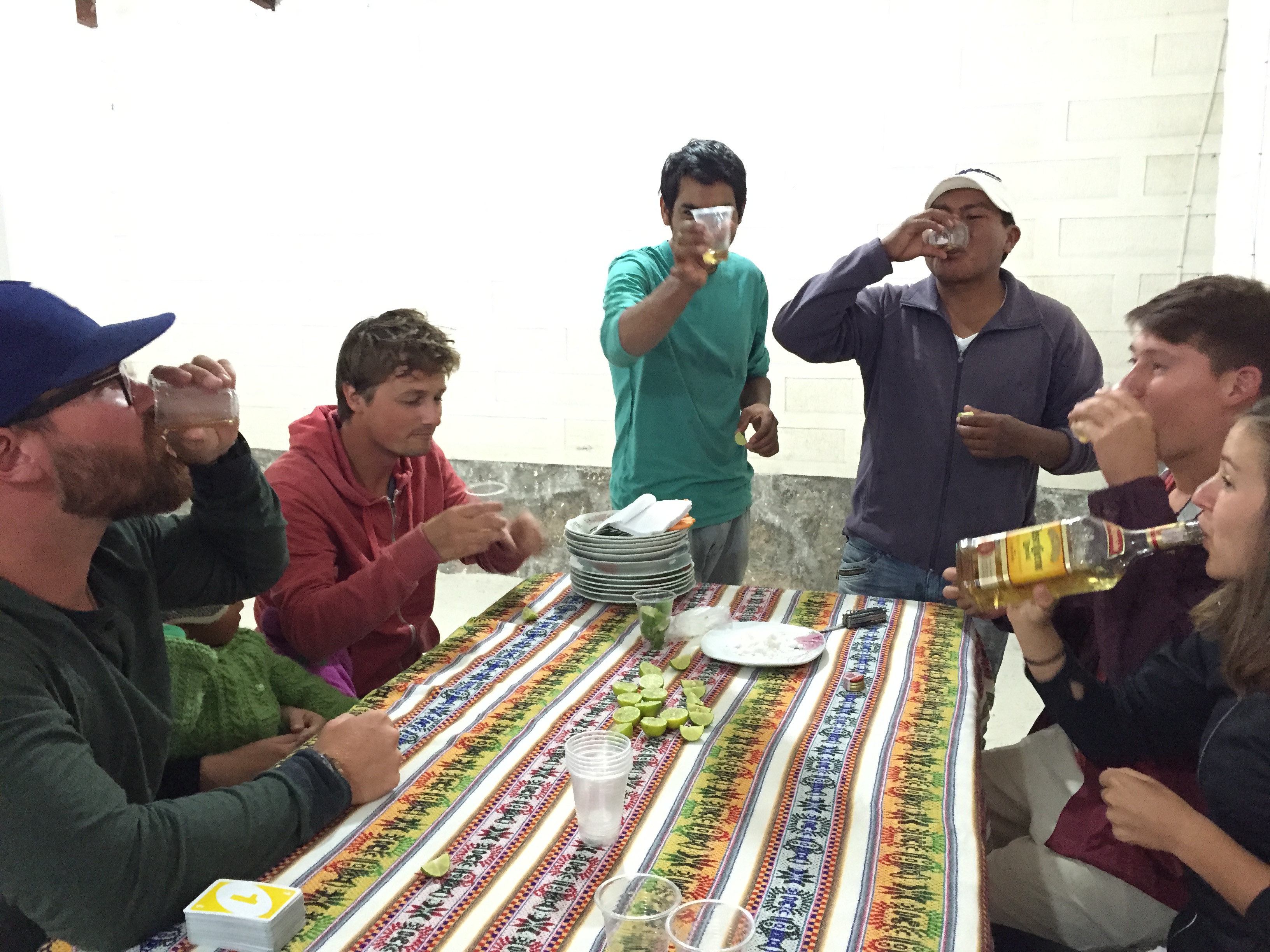


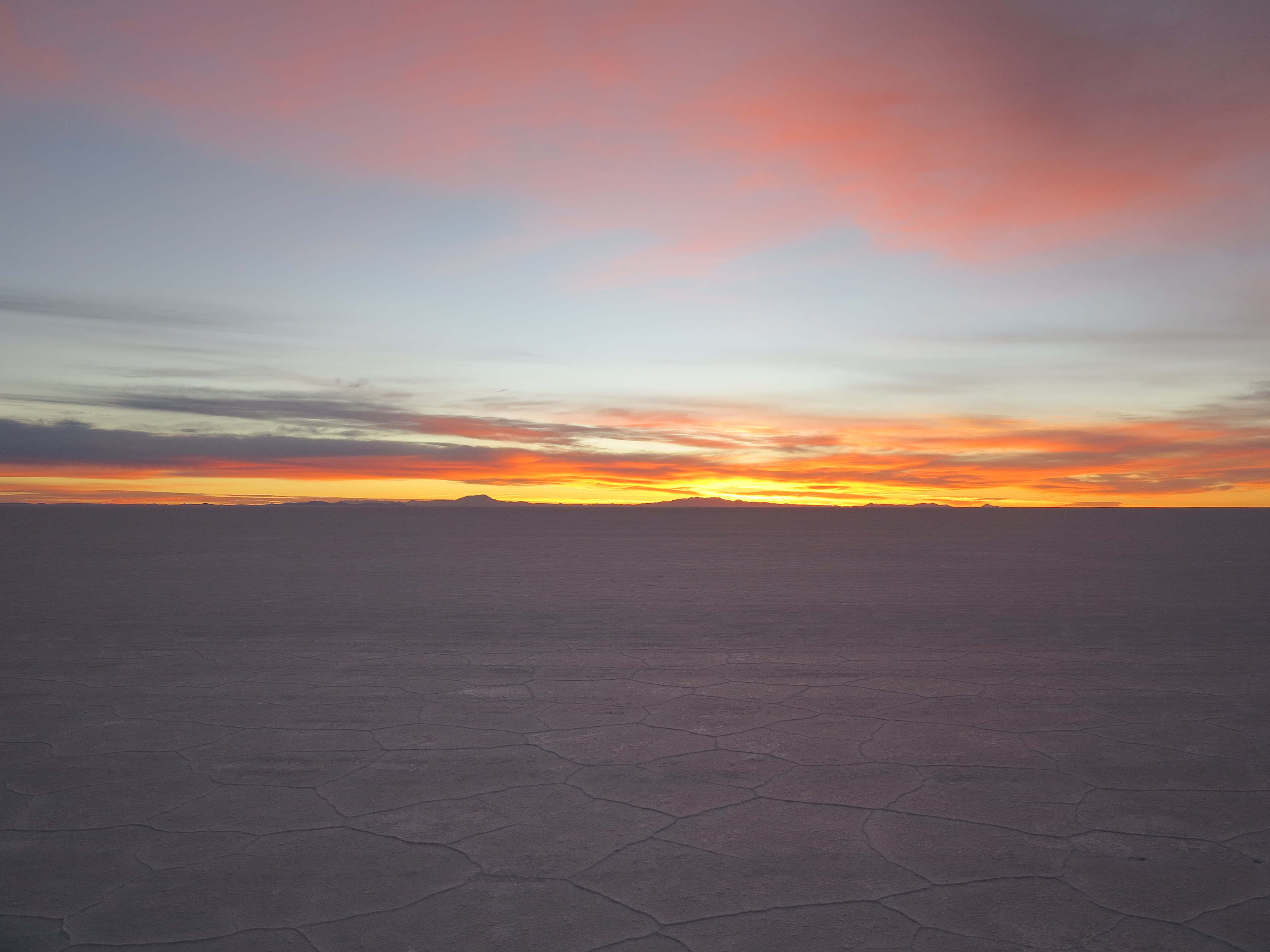
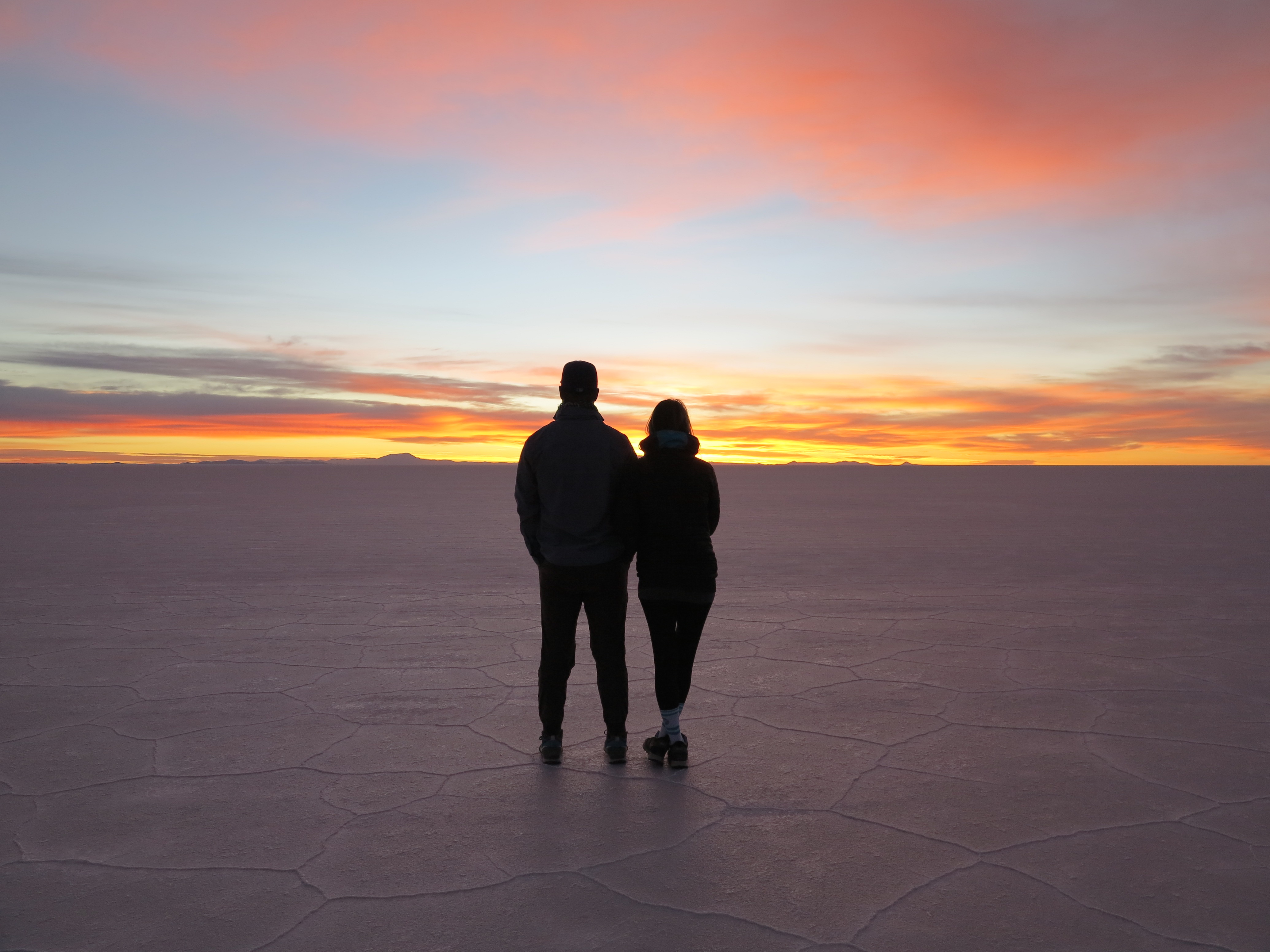





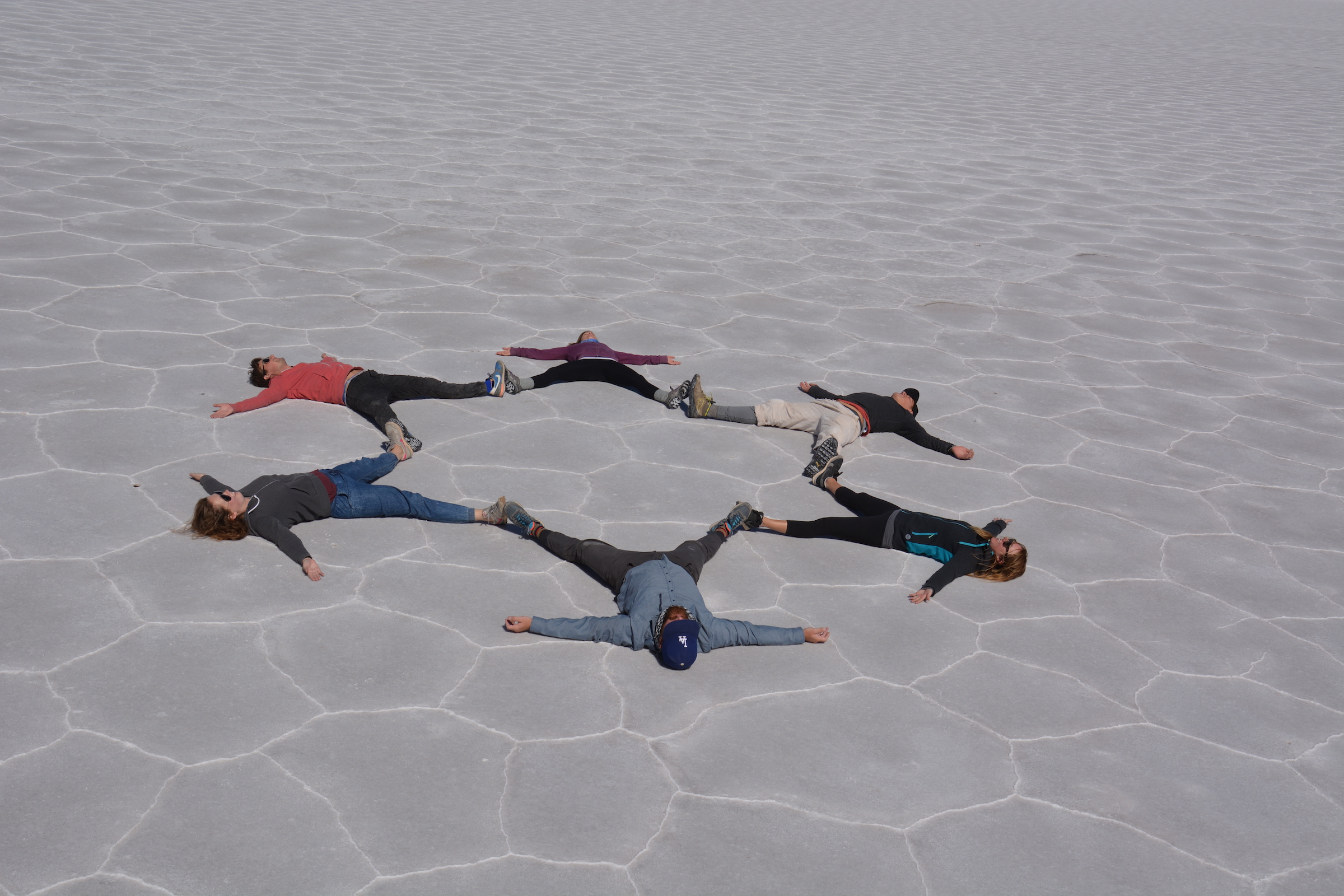




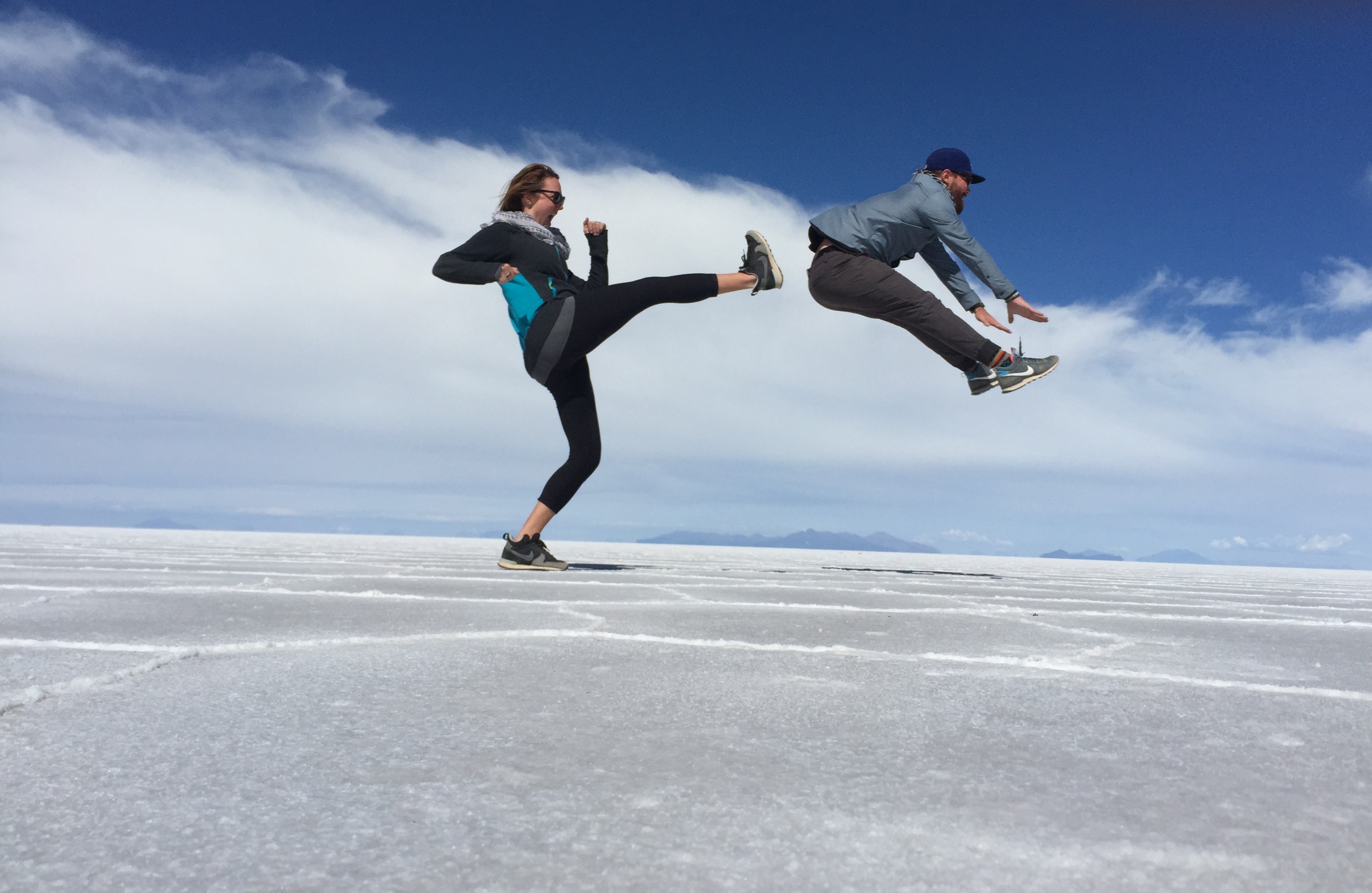



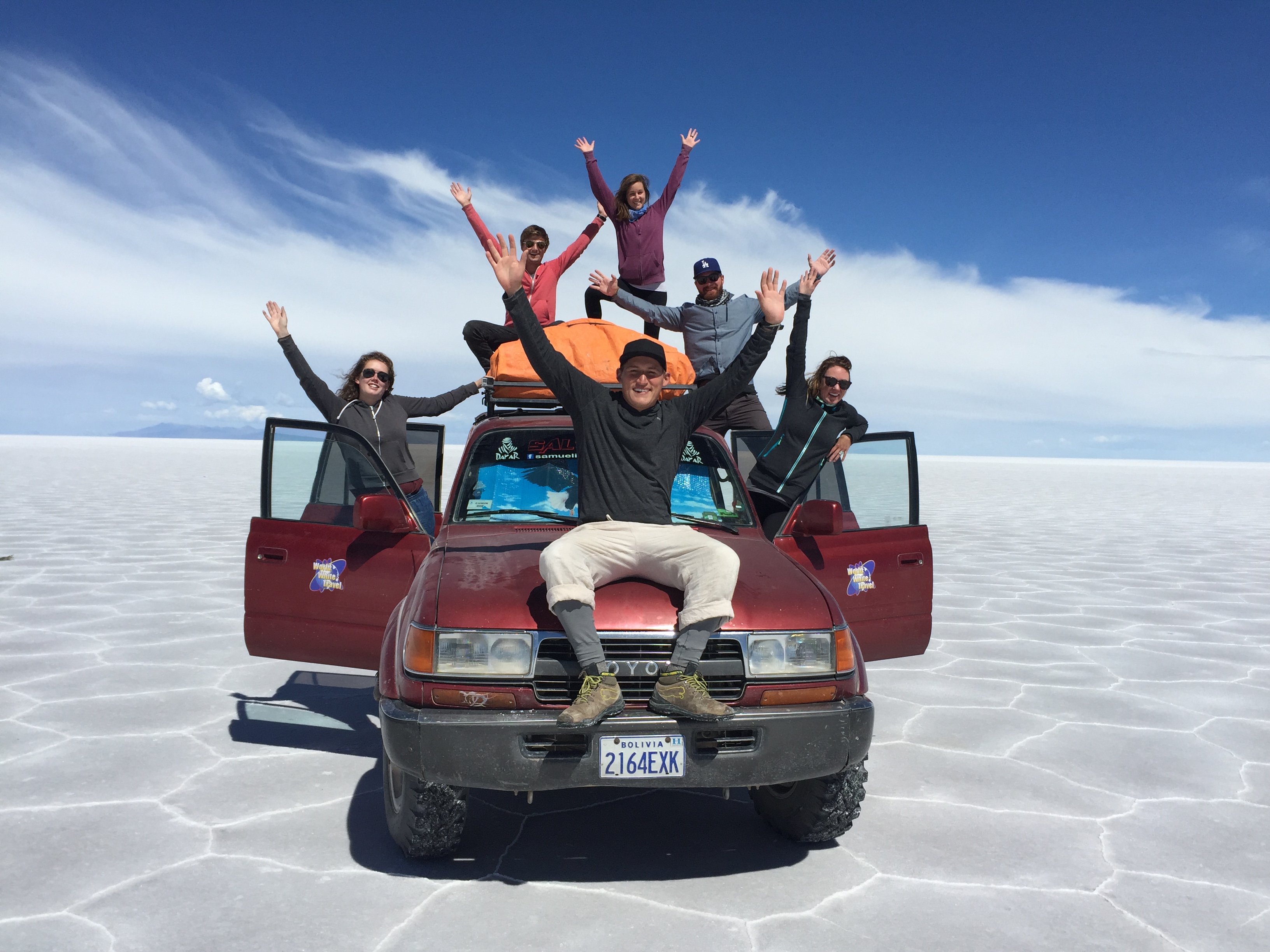
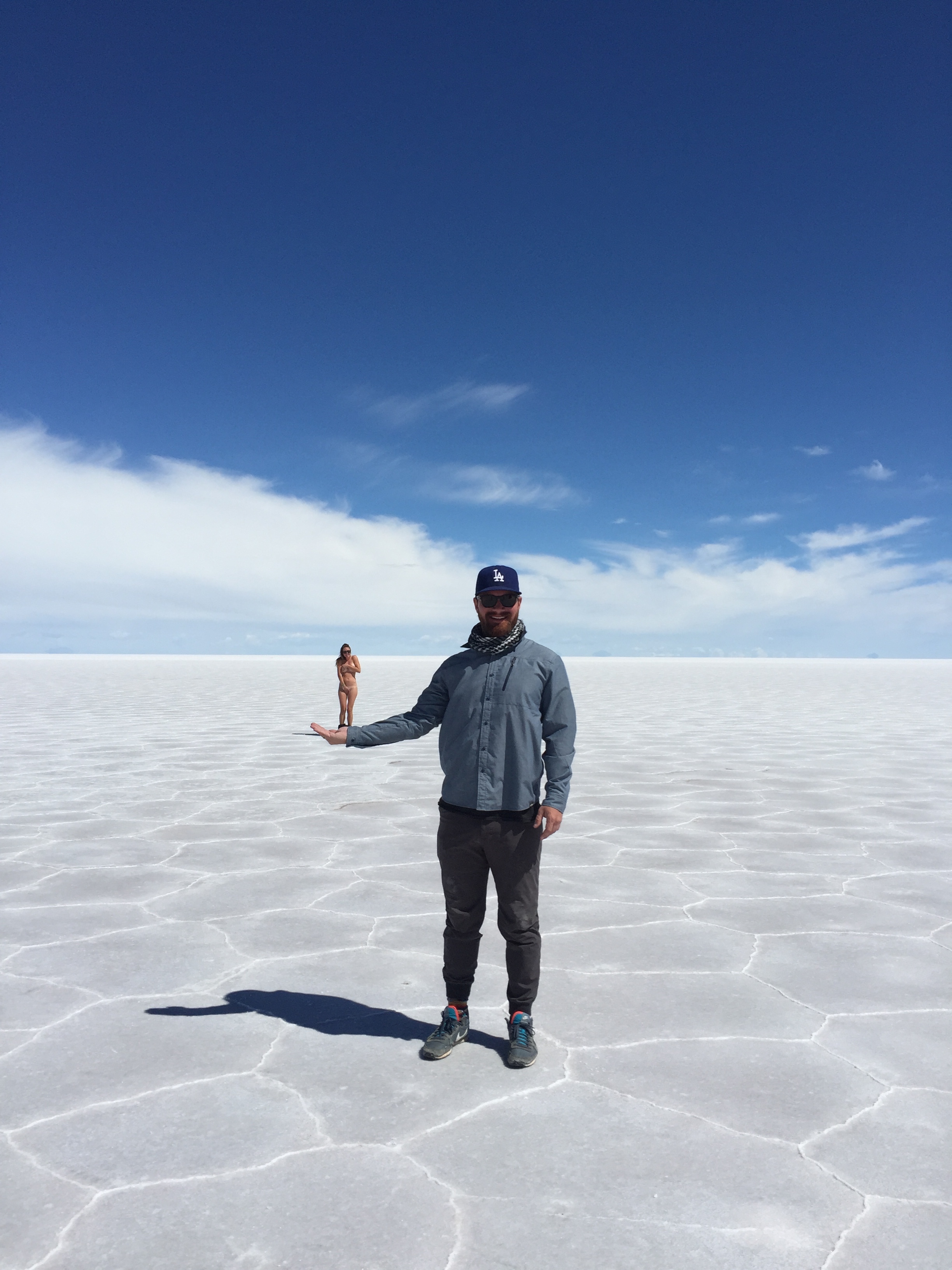
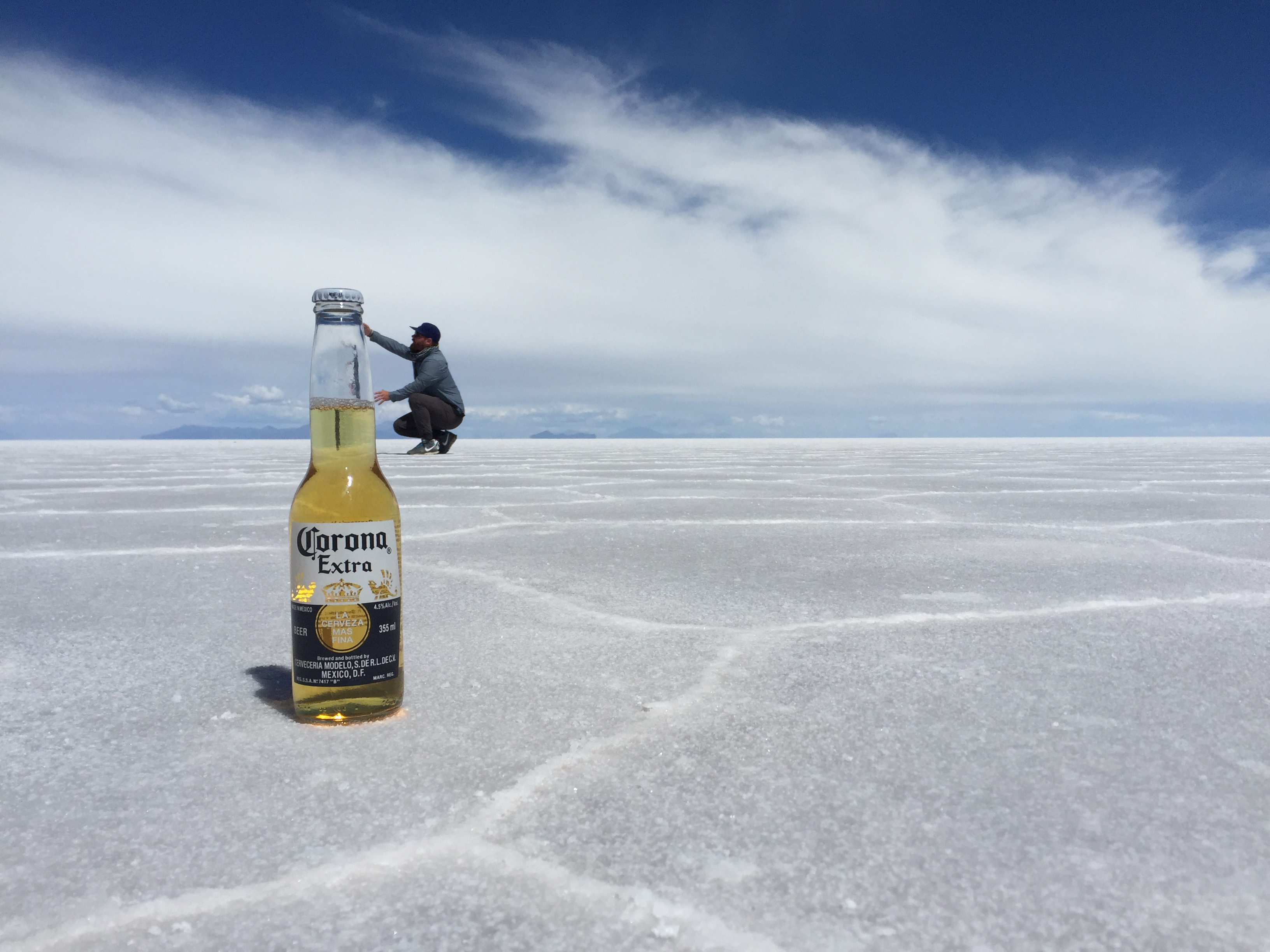
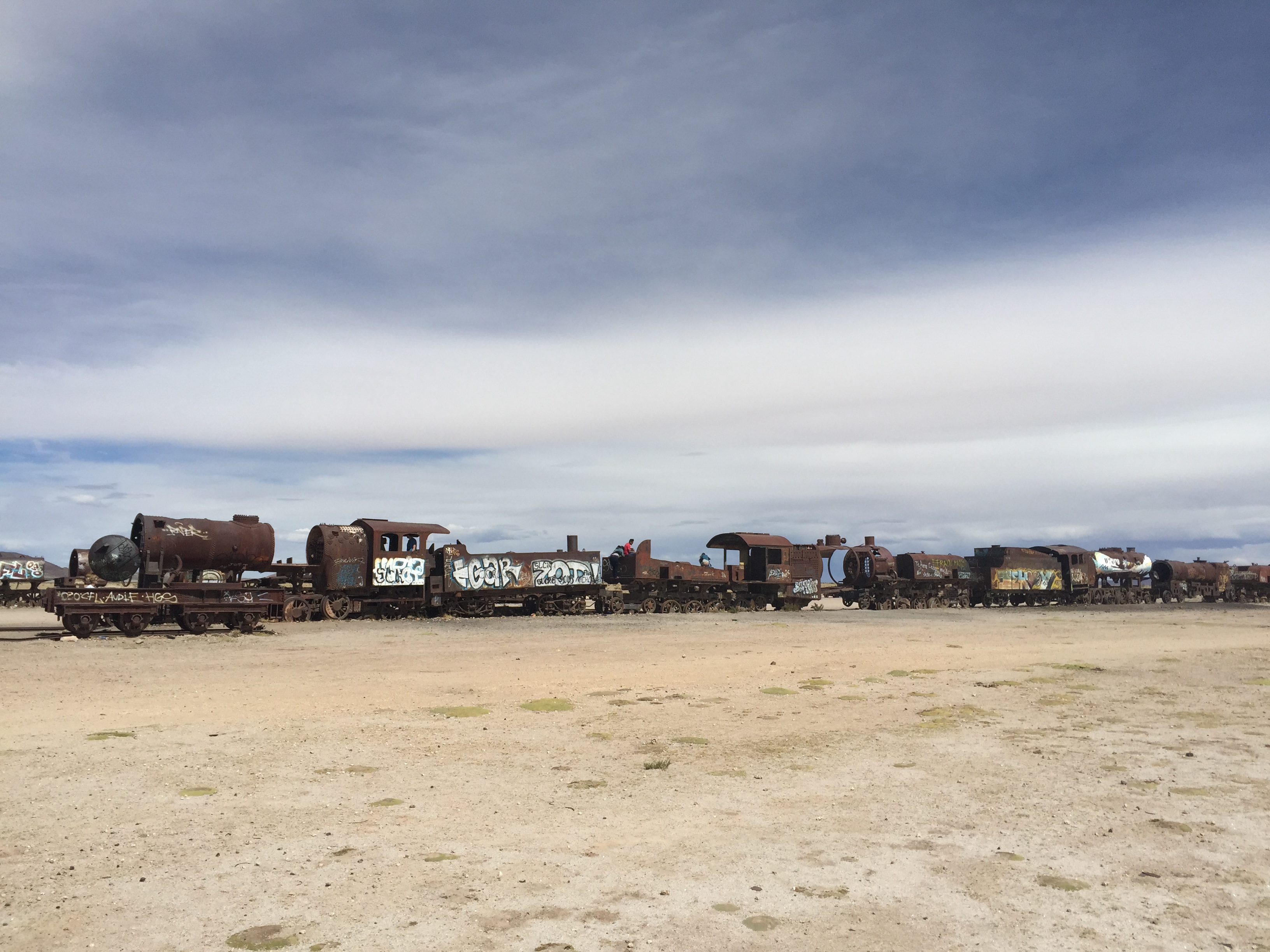

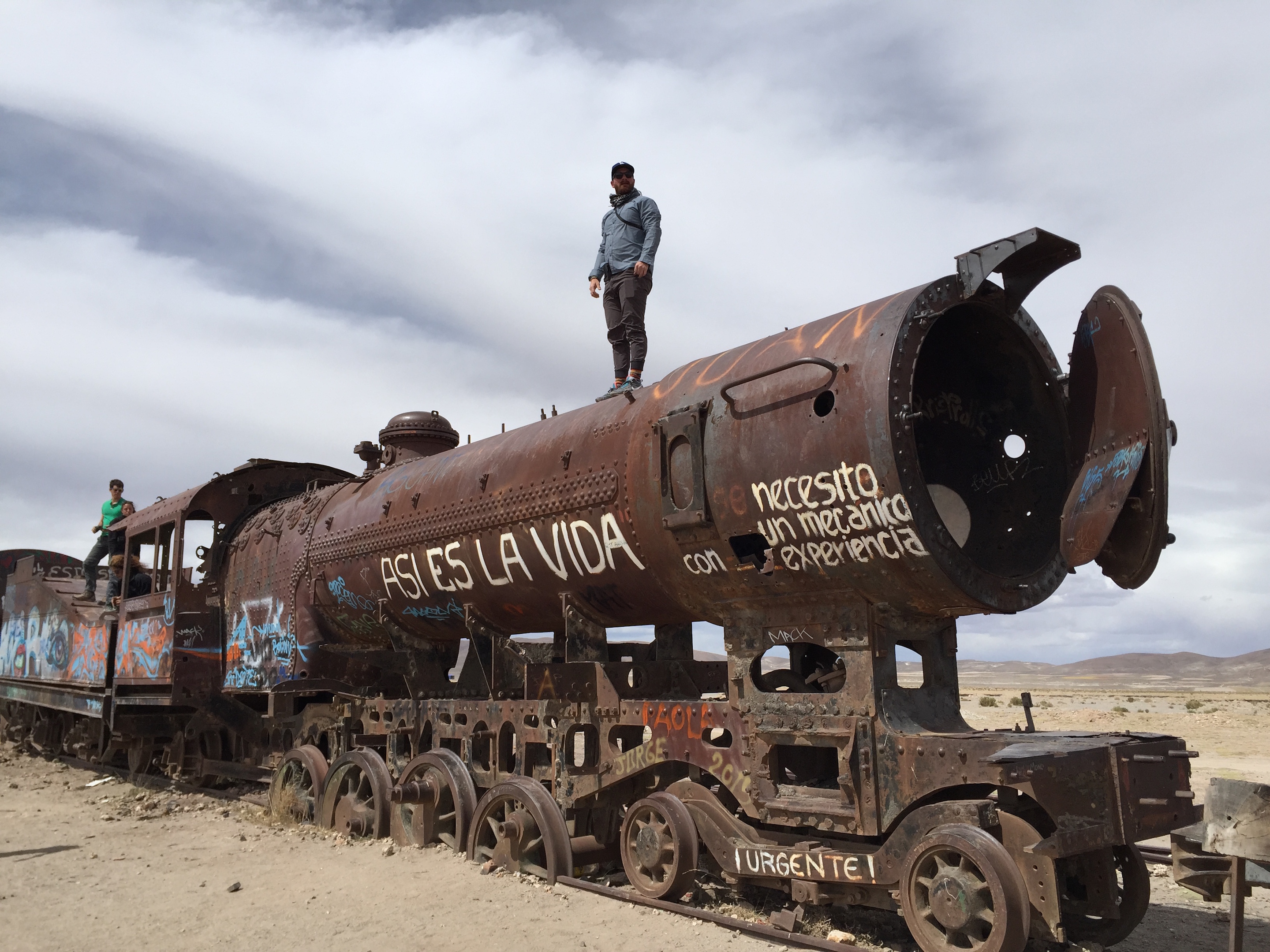


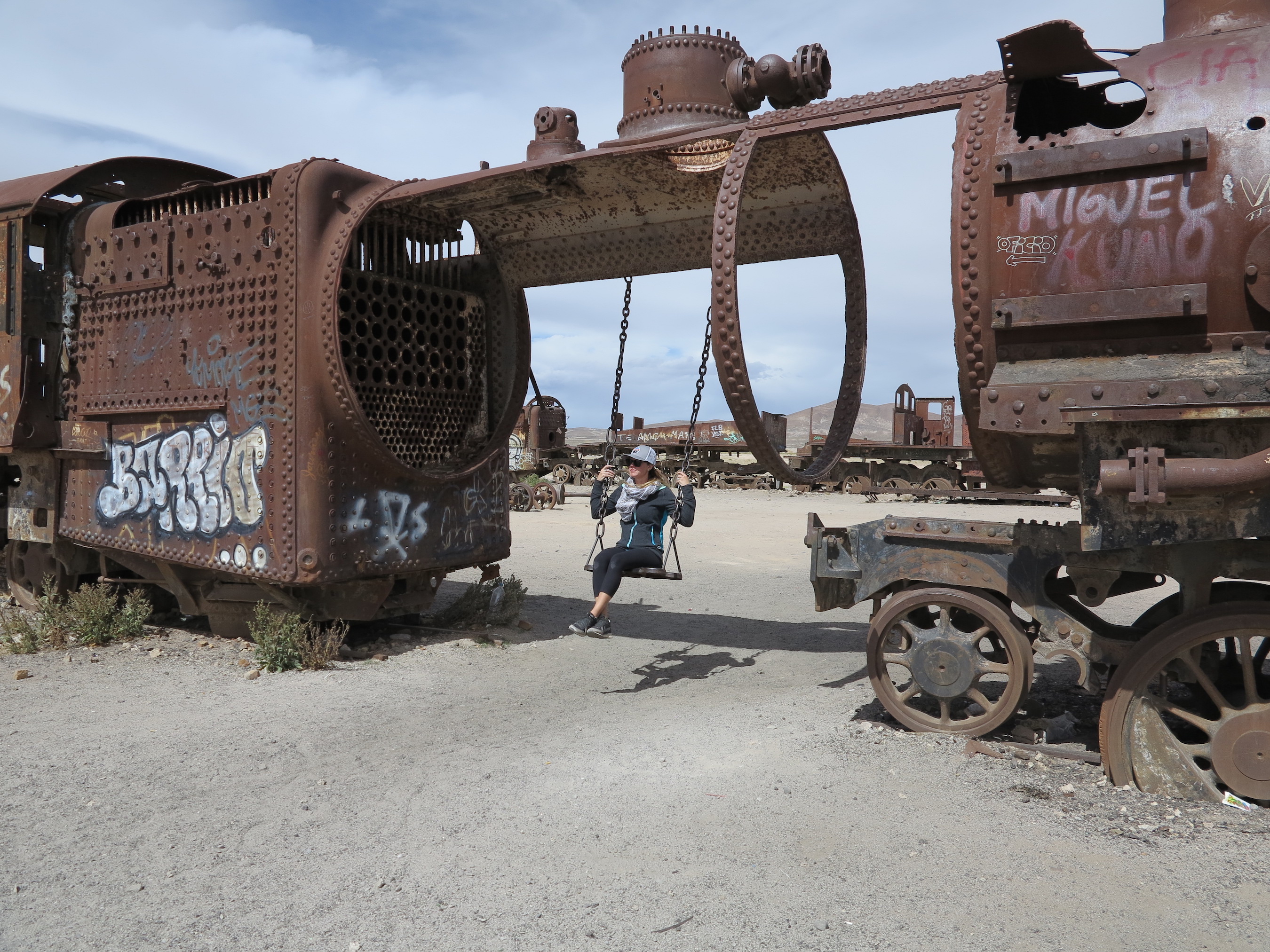
OMG….such great stuff. The llamas headgear really cracked me up, the Gangnam lesson was hysterical and there you are…in the salt flats in the buff!! A “mini you”! HAHAHA! Keep up the wonderful narrative, sweetie. We are all learning through your written word. Love you! xoxo